A few details about my measurements
- RME ADI-2 DAC fs (IEM output, SD Sharp filter) was used as the sound source for all measurements.
- All measurements were made at a volume of 94 dB; the volume was adjusted using an acoustic calibrator (see here, Section 2).
- All measurements were made with standard earphone cables.
- Eartips indicated on the measurements are as follows:
- Measurements of almost all earphones have a peak at 8 kHz – this is the rig resonance. In reality, this resonance is also present in the auditory canal of a living person, but its position varies from about (!) 7 to 8 kHz, depending on the volume and length of the channel. There are also resonances at about 11-13 kHz and higher in the human ear, but the variability of their position is much less, that is, the measurements are reliable in this sense.
- Some measurements have kind of a subtle break around 80-150 Hz. This is a consequence of the fact that the earphone was tilted in the simulator with respect to the central axis. There’s nothing wrong with that. Just ignore it.
- The listening tests were done through the use of RME ADI-2 DAC fs, Hiby R6 III, Shanling M0 Pro, Fiio K11 R2R, Moondrop DAWN Pro and everything else I got my hands on.
My measurement database
- circumaural headphones: https://boizoff.squig.link/headphones/
- in-ear monitors (including TWS and earbuds): https://boizoff.squig.link/
- information about earpads/eartips and a check mark in the measurement’s name: it’s addressed not to the user, but to another measurer so that they can reproduce the conditions of my measurements at their rig (if the rig is of the same standard) and make a comparison (yes, all my measurements can be downloaded). But the check mark is all good for users, listeners, and potential buyers who want to understand what kind of sound they will actually receive. It indicates that the frequency response graph corresponds to the actual listening experience with a normal fit, with any earpads/eartips. For more information, see section 2 here.
What exactly do the column names in the table below mean?
Harman in broad strokes:
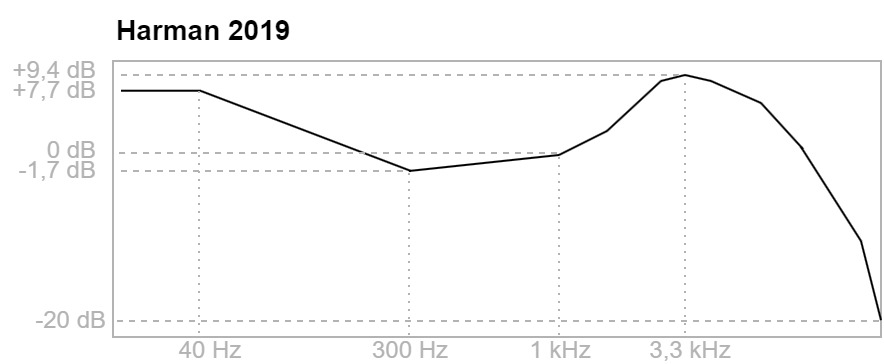
This is a classic Harman curve for in-ear headphones of the latest revision from 2019. It also appears on the Internet under the name ‘Harman 2019v2’. Everything is more or less clear here.
Warm:
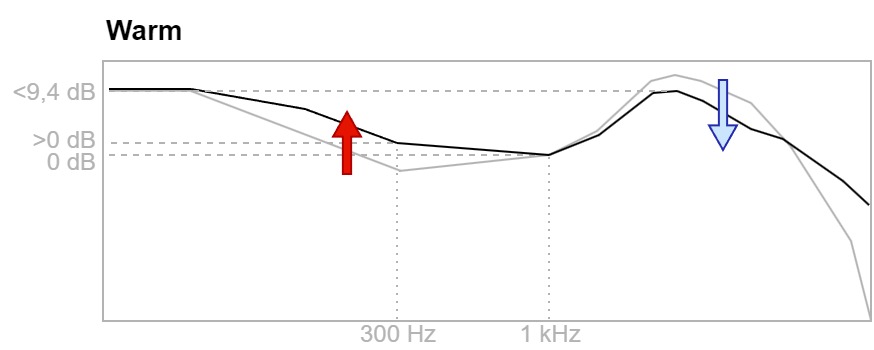
‘Warm’ sound is when there is more bass (not subbass!) and less top. One can imagine that, in terms of the frequency response graph, this is the Harman curve rotated clockwise.
Bright:
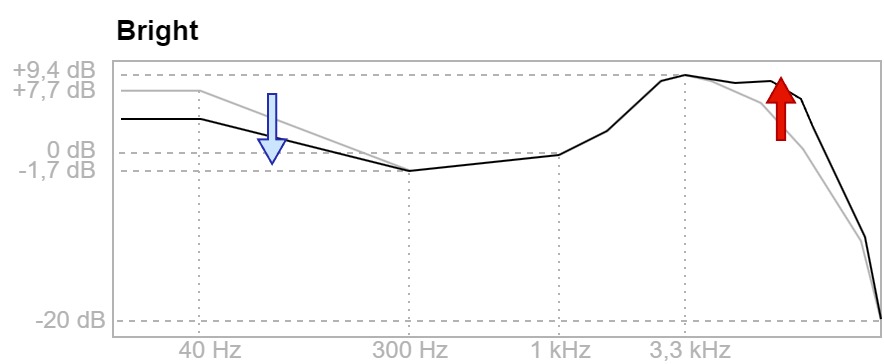
This sound is ‘cold’ or ‘light’: there is less subbass and bass and more top. This is the Harman curve rotated counterclockwise.
V-shaped:
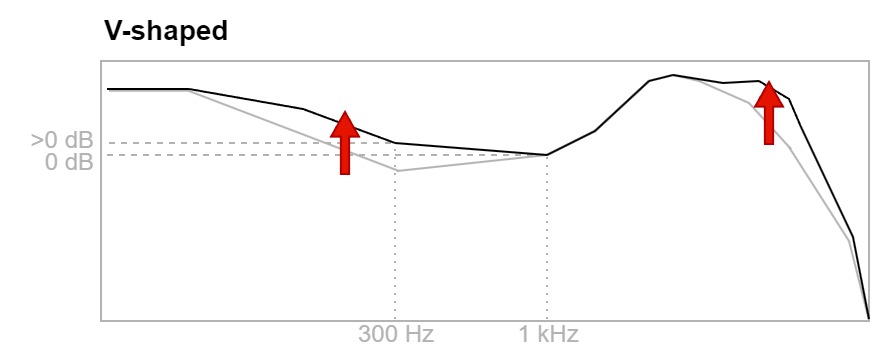
This is a popular V-shaped frequency response: there is more both bass and top.
Balanced:
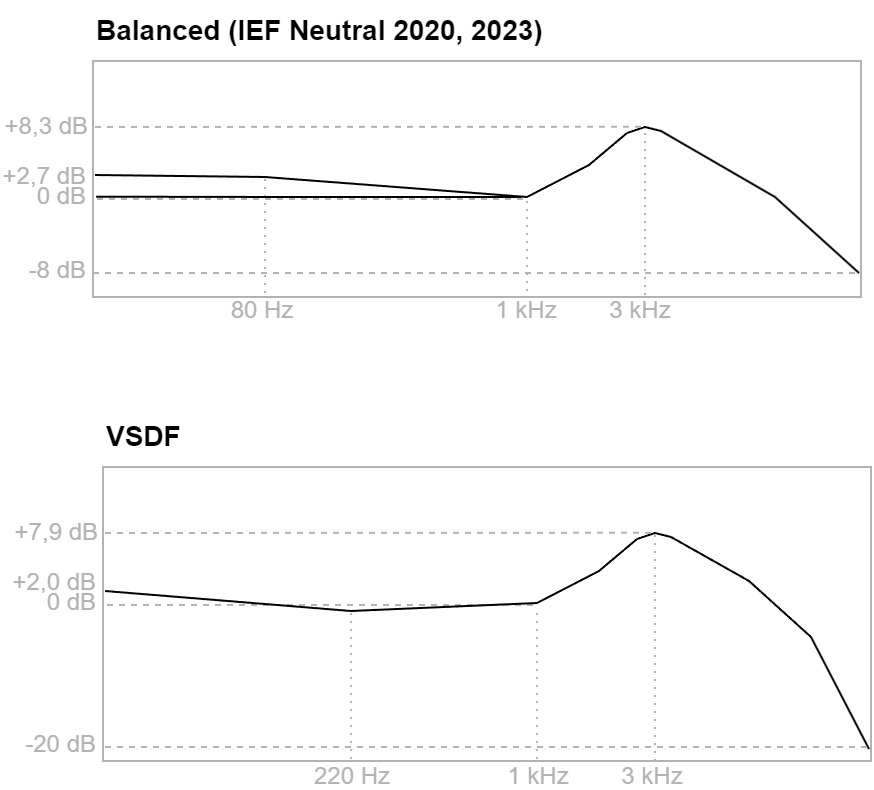
Since the issue of defining what ‘neutral’ sound for earphones is has not been resolved so far, I decided to use the word ‘balanced’. There are the following options for the target curves here:
- IEF Neutral Target 2020 by Crinacle, to my ears, really sounds as the most neutral of anything I’ve tried;
- IEF Neutral Target 2023 by Crinacle differs from its predecessor by a very smooth rise on subbass up to 2.7 dB (there is also a difference at 1 to 3 kHz, but it’s only 2 dB);
- VSDF Target by Moondrop. It was obtained, as far as I understand, from converting the diffuse field curve from the B&K 5128 rig under the IEC711 standard. Plus, a small rise on the subbass has also been added.
All three curves are fundamentally similar. The difference lies in the magnitude of the rise at 3 kHz and the rate of the dip in upper frequencies.
Meta 2024:
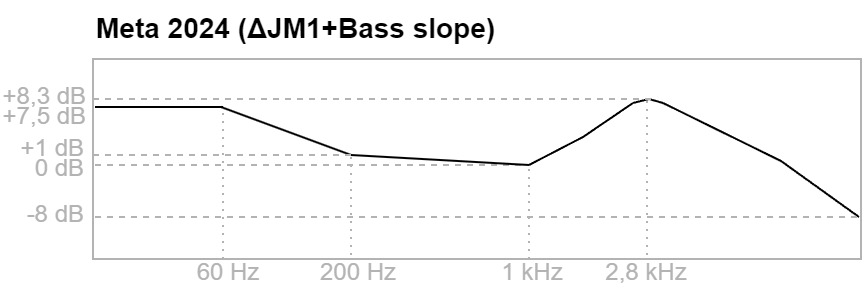
This is the target curve obtained from diffuse field measurements on B&K 5128 (ΔJM1), to which subbass was added. It’s kind of the latest trend in targeted earphone tuning. The sound is pretty good and decent. Those willing to learn more are welcomed here.
Let me note an important thing: we’re talking about models above, and any models are a reduction of physical reality. There are no earphones that would correspond to any target curve up to one hundredth of a decibel a priori. We always have to do with fluctuations around some values. Moreover, there are cases when it is generally difficult to understand how to evaluate the sound of a model from graphs (see measurements of AFUL Explorer, Performer, etc.). Then you’ll have either to rely on my subjective assessment or to go and listen on your own.
FAQ
Q: Why don’t I see XXX earphones on the ranking list?
A: Possible reasons are as follows:
- I could reject them in the selection process, judging from their measurements (here’s a funny example),
- I could test and measure them, but they didn’t become the best in any category,
- I don’t know anything about them. So it goes.
Q: I don’t like your ranking! It’s wrong, and I don’t agree!
A: Go ahead and make up your own. There’s no need to share that you’re not happy with my blog in my blog.
Q: You wrote that XXX headphones are warm, but they are actually cold!
A: Not “actually”, but “it seems to you that”. And I wrote about what seemed to me and proved it with my measurements. When in doubt, see the previous question and the answer to it.
Q: You told that the price is such and such, but it’s different now!
A: Prices are constantly changing, so there’s no point in updating them. What matters is that the price ratio within the group (horizontally) and in respect of which models are cheaper and which ones are more expensive (vertically) does not change, i.e. the position of the headphones in the ranking table remains the same.
Q: I poke at the measurements on your squig, and there is an error…
A: Please report where you’ve found the error, and I’ll fix it.
Q: May I send you XXX earphones for measurements?
A: If I don’t have their measurements, you are highly encouraged to do so. Feel free to send me an email so that we could arrange all the details.
1. Best in-ear monitors, according to Boizoff.com, within a price range from 0 to $700
See the explanations in the next section.
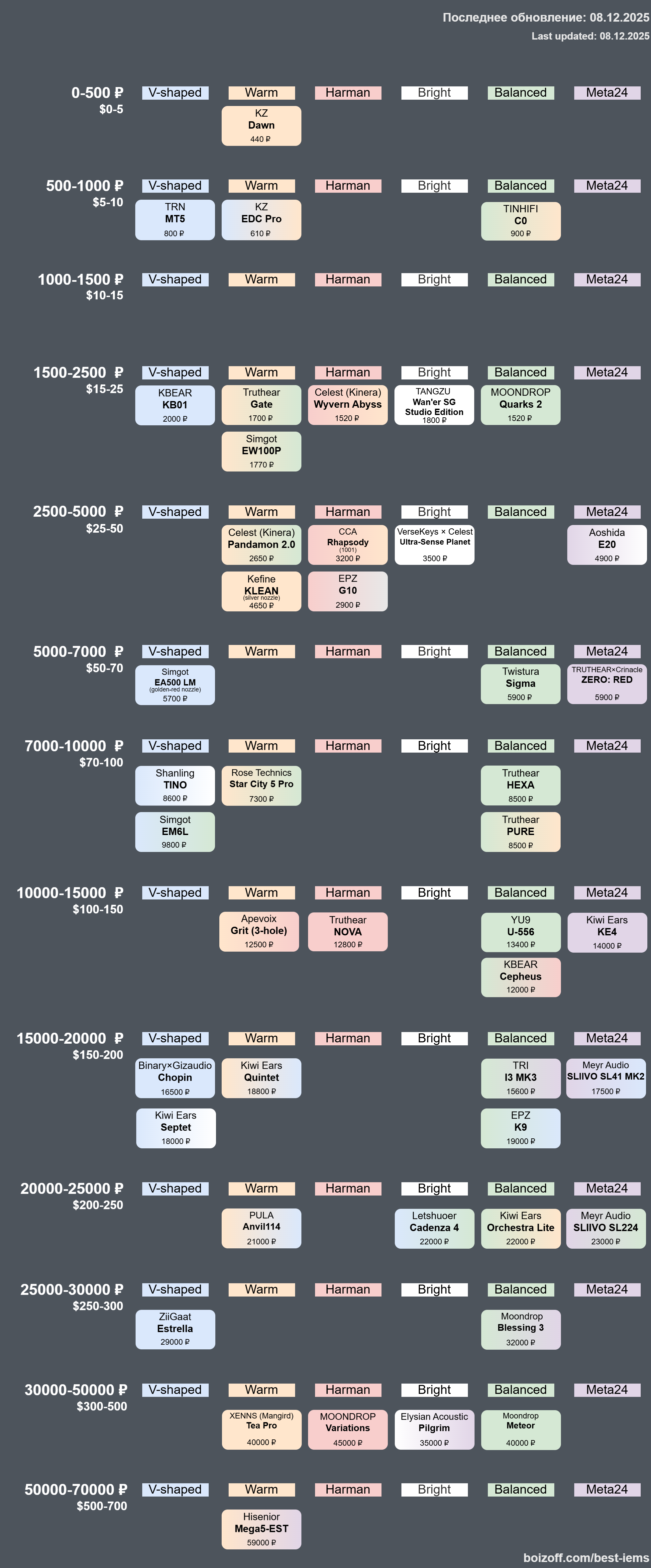
2. More informaton about IEMs that I consider the best
2.1 Category up to $5
KZ Dawn are the cheapest decent earphones in the world that I could find. They’re so cheap that you can’t even detach their cable from them. The sound is warm and basshead, but there is no ‘dip’ at about 10 kHz which is typical even for a higher price bracket, and, in general, high frequencies have no peaks or drops.
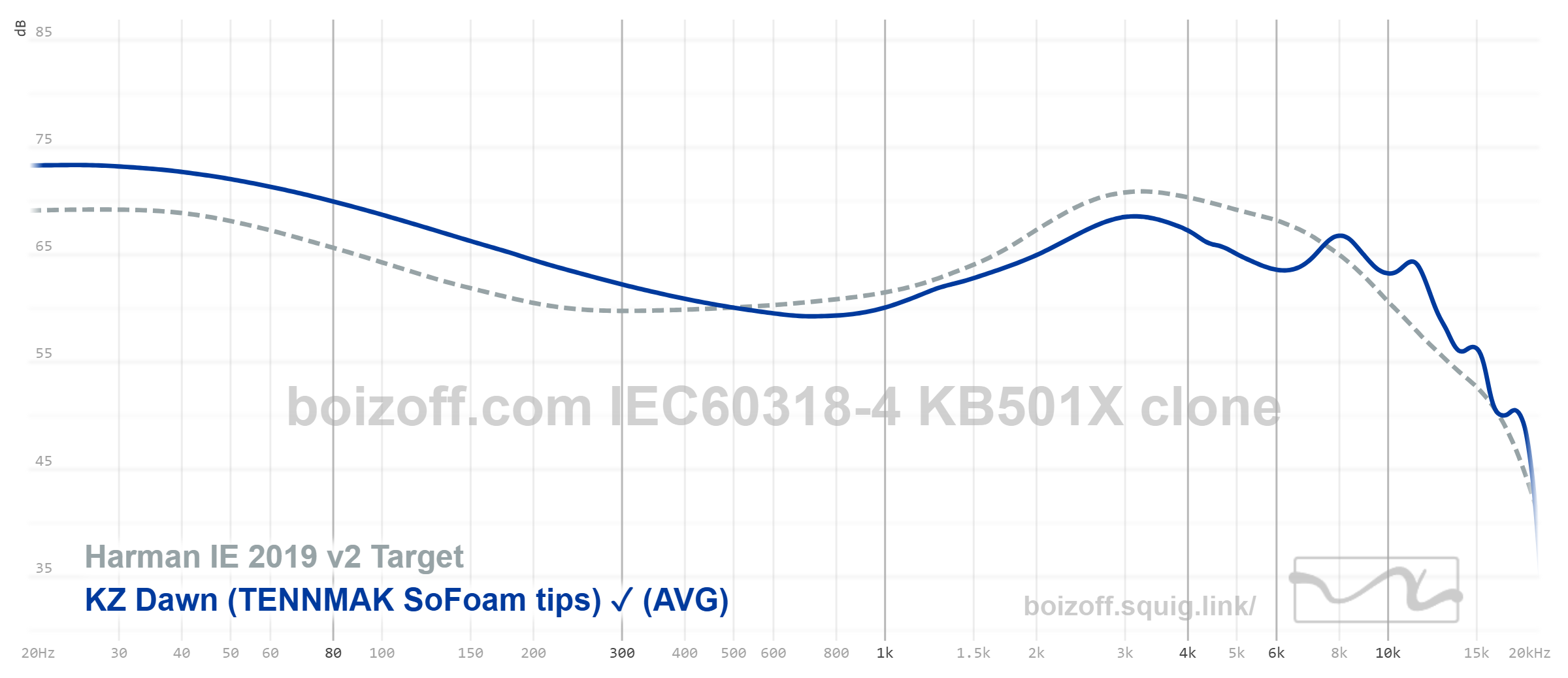
2.2 Category from $5 to $10
TRN MT5 have a very active top that may confuse some listeners, but the overall sound is quite good. There are also excellent compact metal enclosures and the worst cable I’ve ever seen.
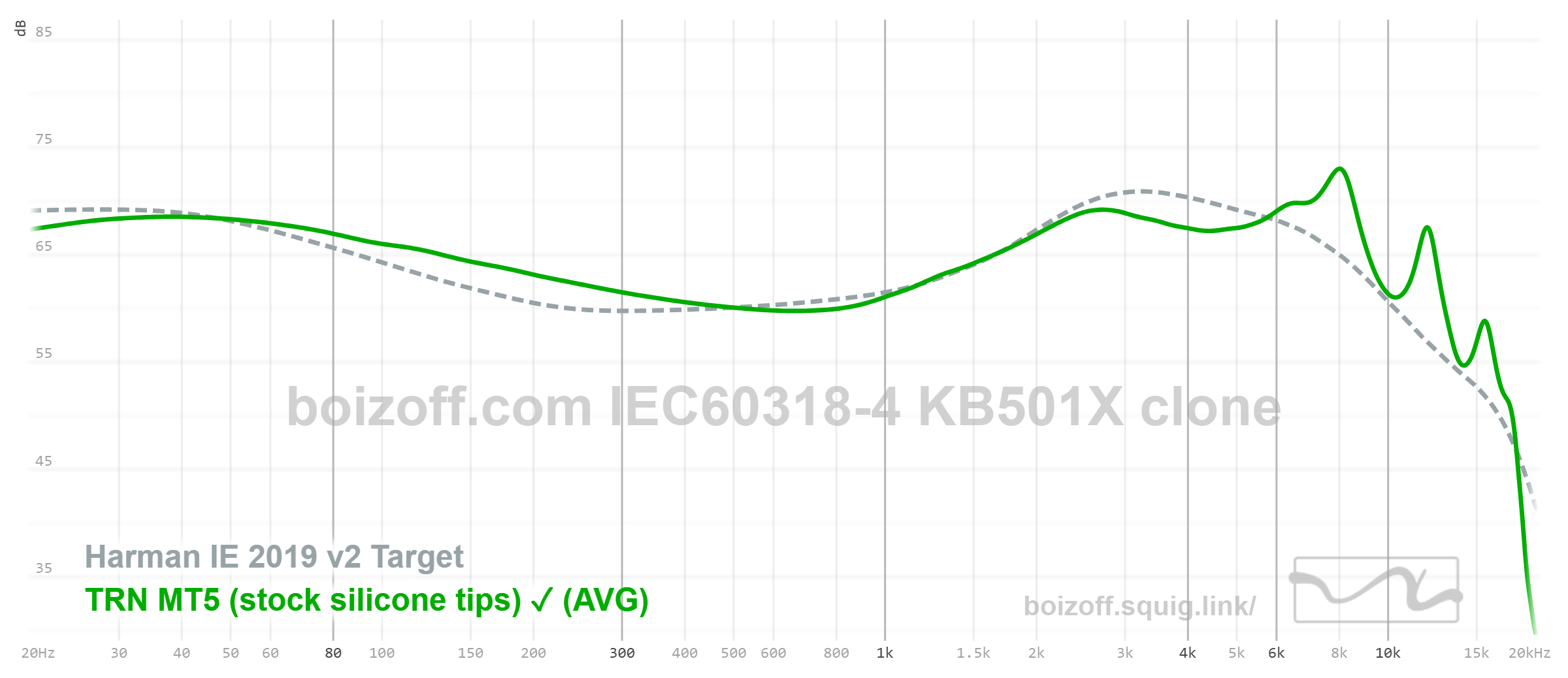
KZ EDC PRO have standard KZ low-end enclosures, a lot of bass and subbass, but also a relatively smooth ‘top’ and a moderate resonance at 11 kHz.
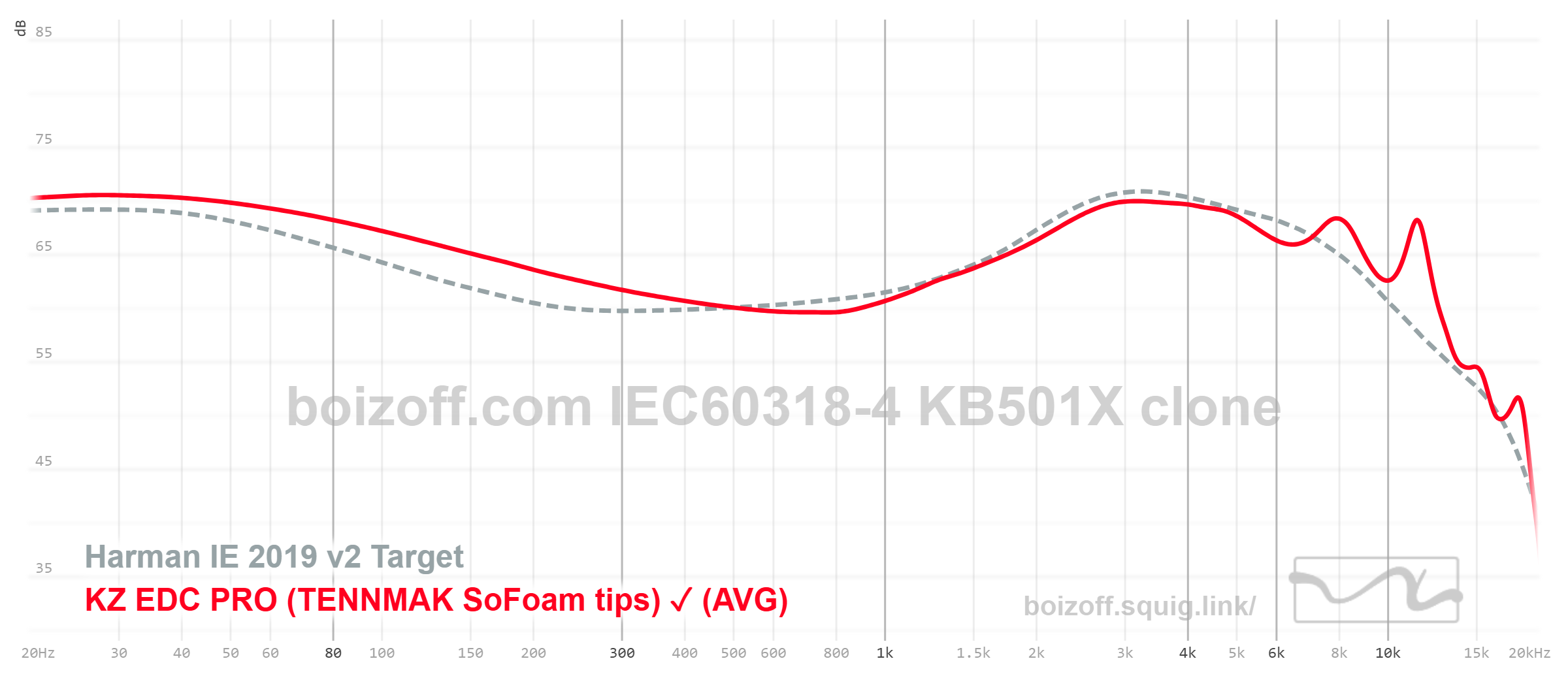
TIN HiFi C0 have thick enclosures, overly soft standard eartips (squishing in your ears while walking), and an extremely cheap fixed cable. It will take some time to find an acceptable fit, and there’s no guarantee that in the end you’ll be able to find a comfortable position. But the sound is good, damn it! There’s total absence of narrow peaks and dips, a precisely sustained middle, muffled subbass, but slightly raised bass. As a result, we get a slightly warm, but generally balanced neutral sound delivery. It’s strongly recommended to change the eartips for CP100, KZ Starline, Whizzer ET100AB, anything but this original misfit. I would take TRI Clarion, flip C0 into the behind-the-ear position, and get a buzz out of their sound only afterwards.

2.3 Category from $10 to $15
I have nothing here. I can’t recommend any earphones I’ve tested in this price tier.
2.4 Category from $15 to $25
Starting from here, we can already talk about serious sounding.
KBEAR KB01 have compact universal enclosures, smooth top, and slightly inflated bass. All the money was spent on the sound, and it’s outstanding. KB01 can be easily worn under a tight hat in winter, and you can even sleep in them.
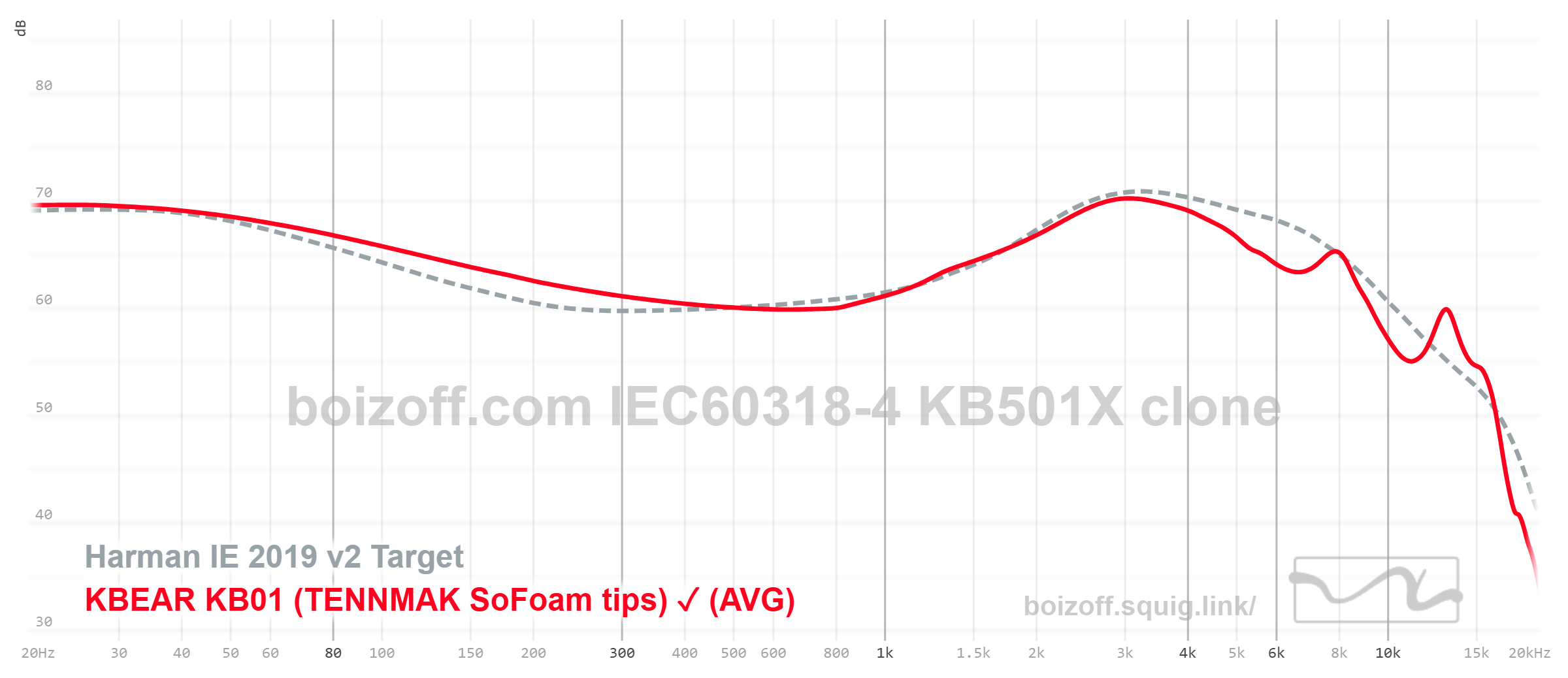
Truthear Gate is a case when the manufacturer managed to cram a lukewarm, but still close to neutral sound delivery into funny transparent enclosures. The sound ducts are short, so you may need longer eartips. I had two samples – the measurements for both are exactly the same, which inspires hope that there is a minimum difference between the specimens.
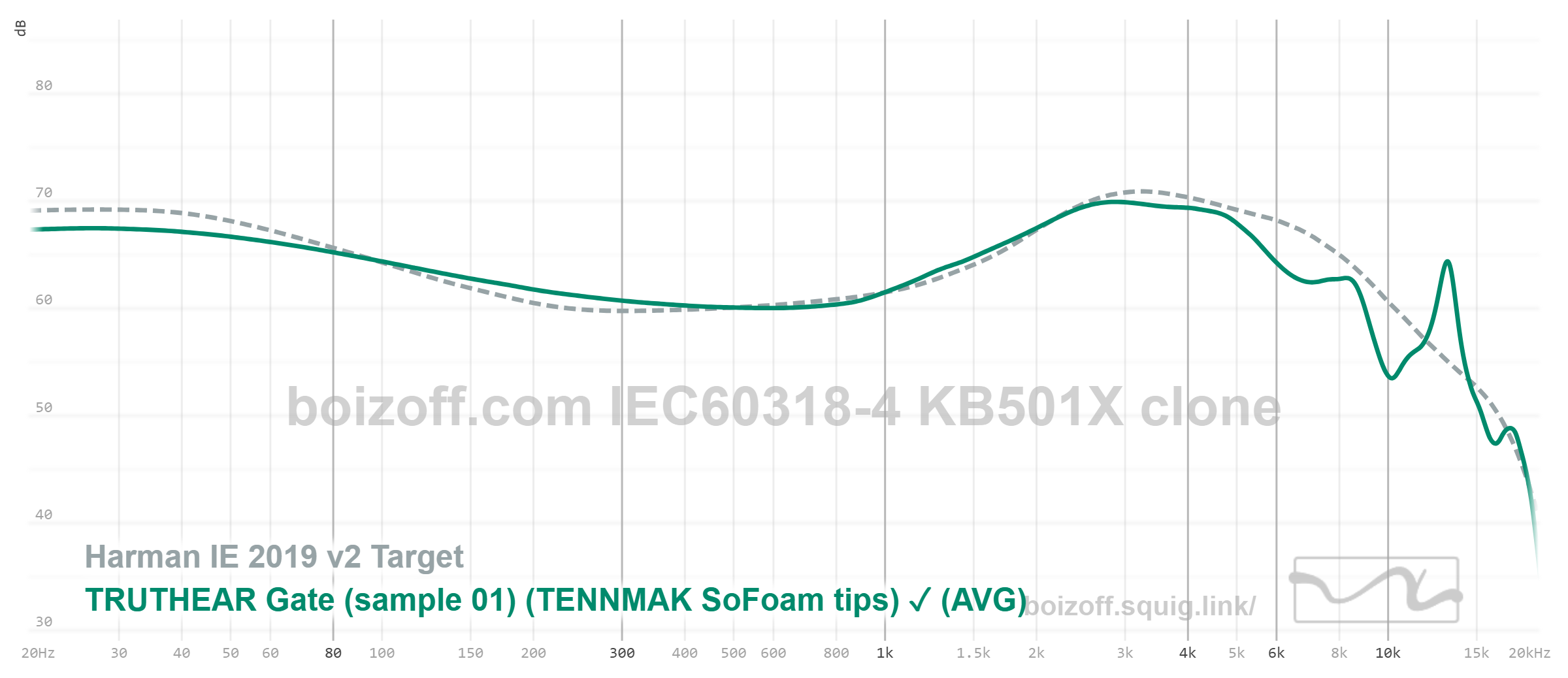
Celest (Kinera) Wyvern Abyss are slightly bassier than Harman requires, but there is no peak at 11 kHz, while 6 kHz never torments the user’s hearing. They have beautiful, textured enclosures and a Pro version with a wired microphone, even with a wind shield. This is a bounty for a novice office audiophile or a computer game lover.
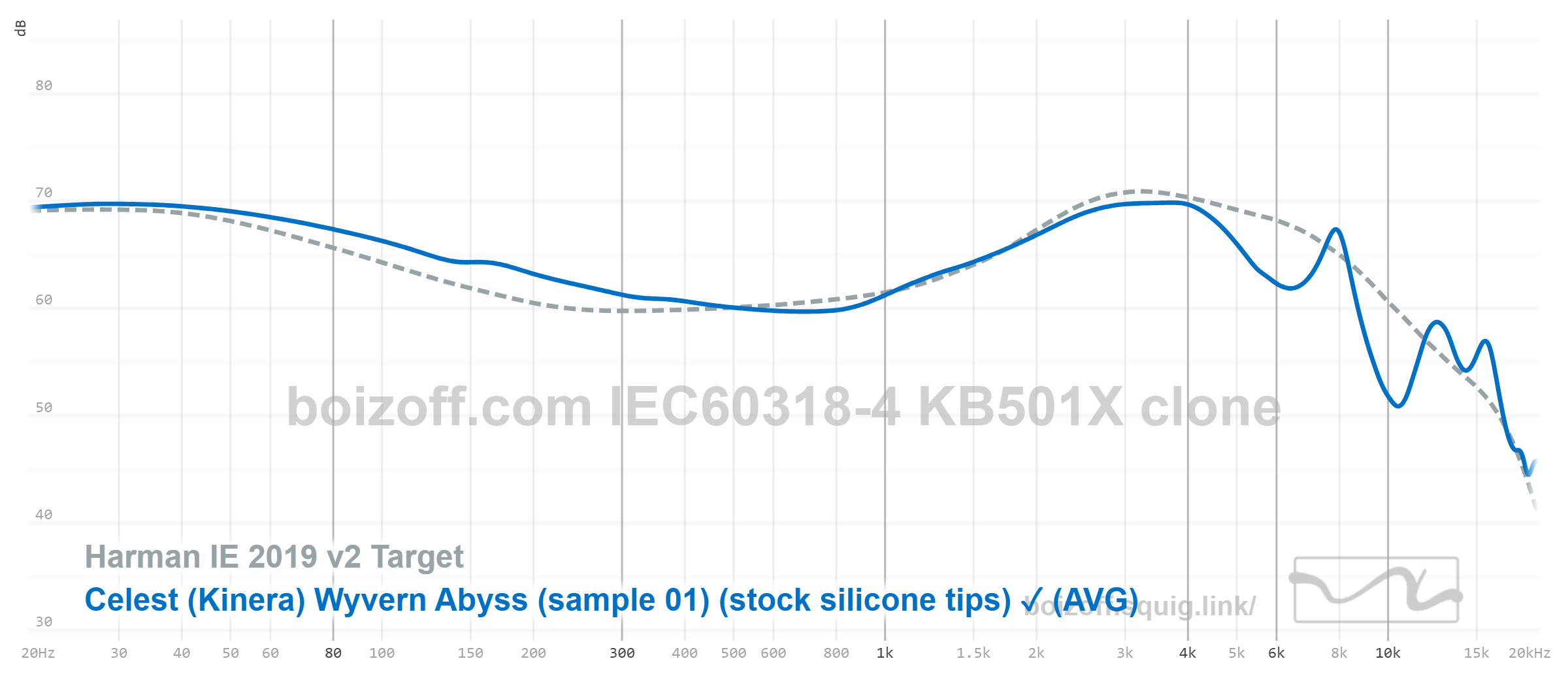
Tangzu Wan’es SG Studio Edition have a very neatly tuned, wide and light sound and cunningly shaped ‘mature’ enclosures.
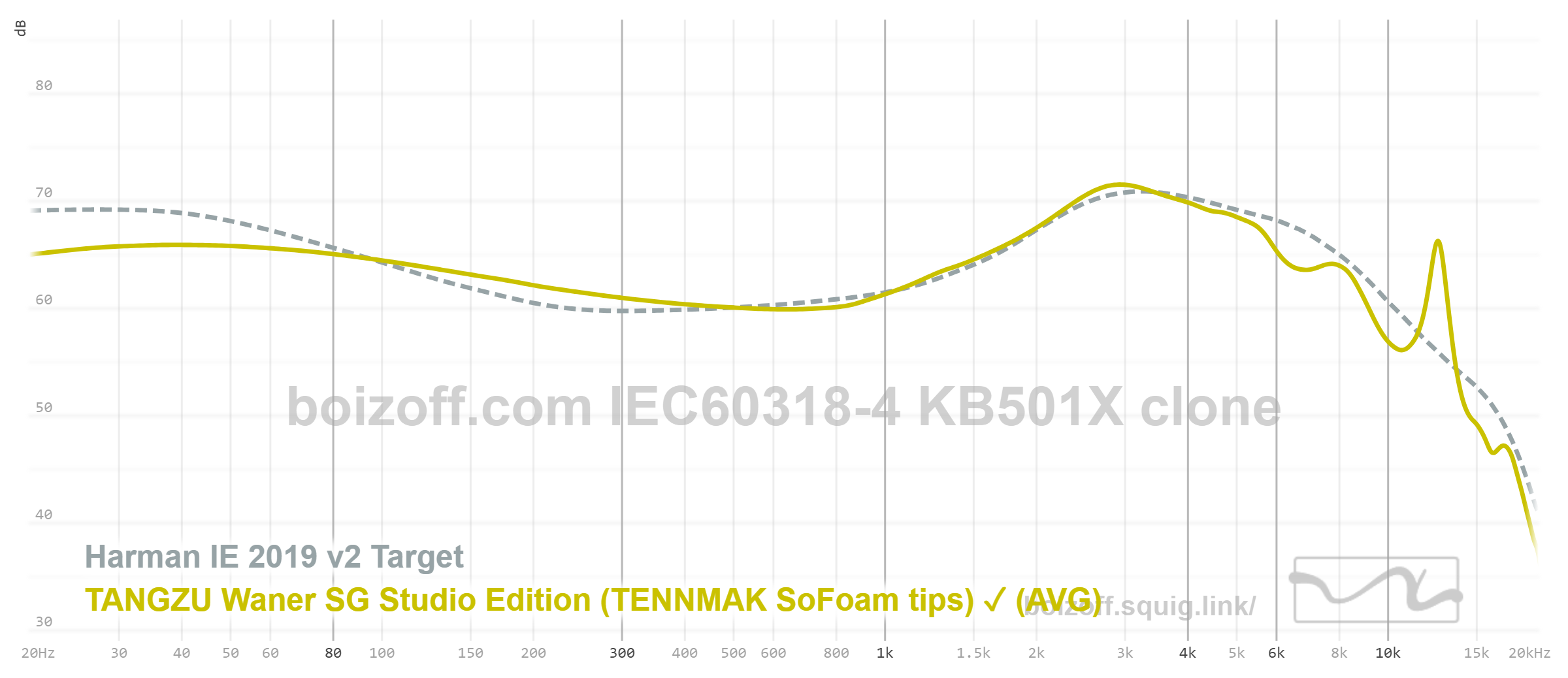
MOONDROP Quarks 2 have a fixed cable and a Type-C connector (and microphone), are not much to look at, but provide the sound that is phenomenally smooth at ‘tops’, as well as the overall balance of the sound delivery, which is perceived as neutral by ear. They are designed to be worn with their wire down, but you can habitually throw it behind your ear. And don’t let the mesh on the back of the enclosure fool you: the earphones are closed-back. You might also need longer eartips.
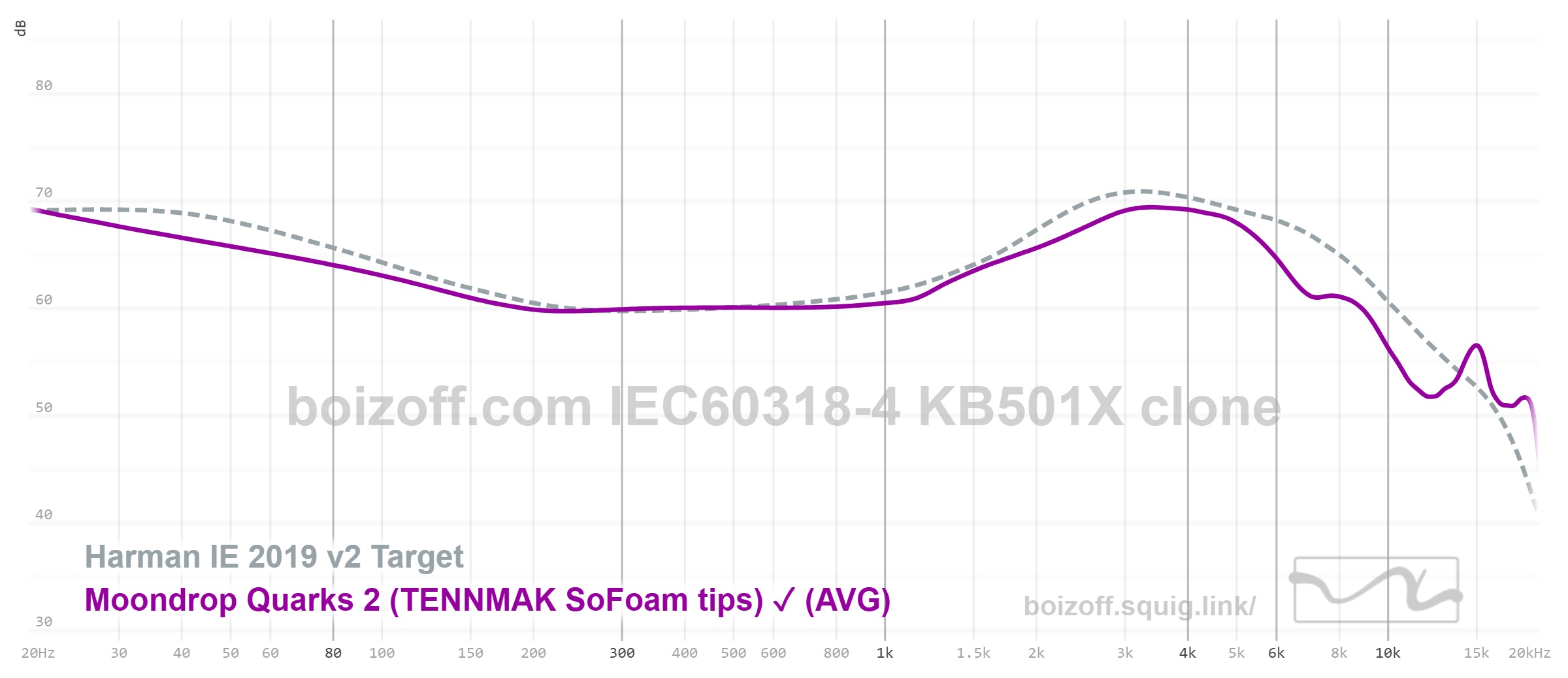
2.5 Category from $25 to $50
EPZ G10: the model name doesn’t ring a bell, so I suggest you remember G10 as ‘earphones with a flashlight’. An ultraviolet flashlight is really included because if you shine a little light on the enclosures, they will glow in the dark for a while. The model is positioned as a gaming one (its ‘serious’ version is EPZ Q1 Pro that differs only in the color scheme of the faceplates and no flashlight included, but they sound identical), but it has an excellent ‘smooth’ tuning that slightly emphasizes the top and simultaneously hides the subbass. I would also expressly praise small sizes and extremely versatile shapes of the enclosures.
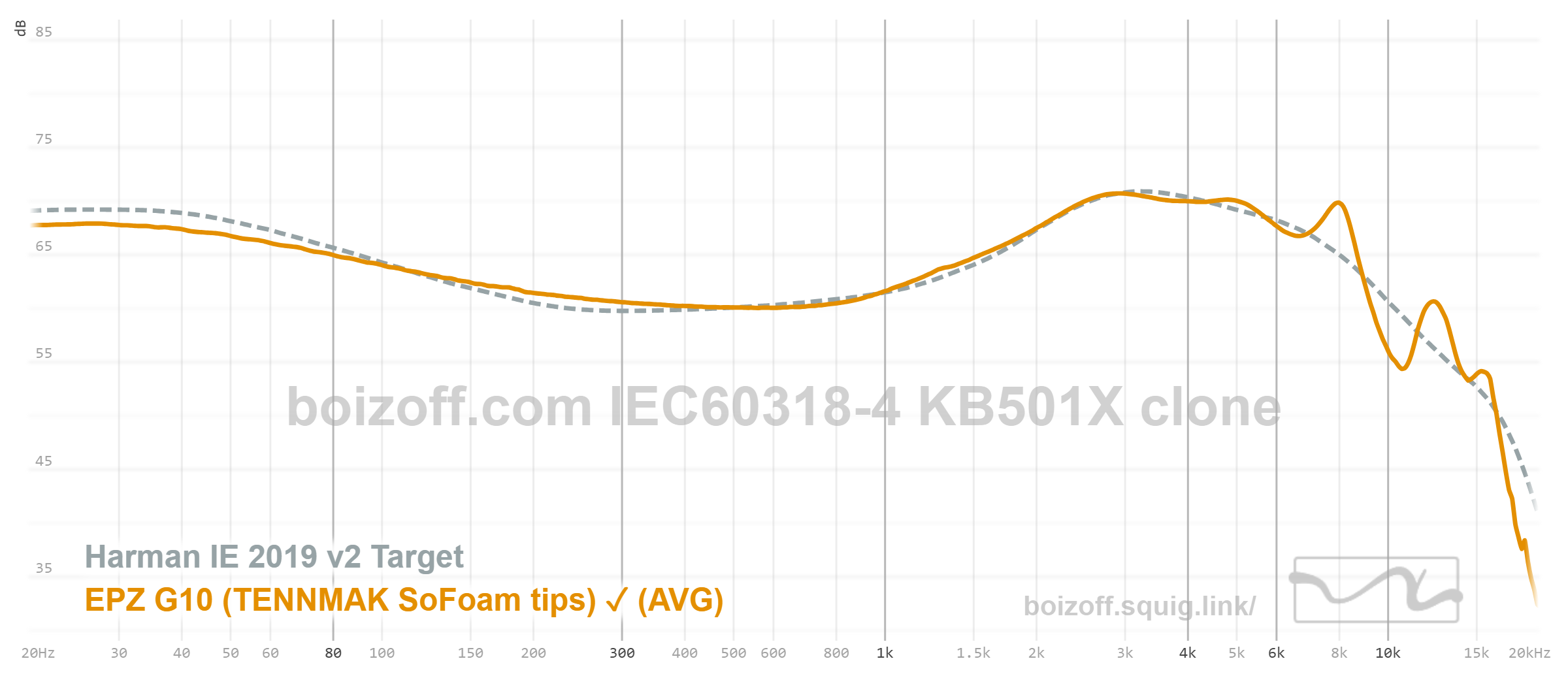
Celest (Kinera) Pandamon 2.0 are the cutest-looking round earphones, which sound emphasizes the middle and bass, but in a very careful way, so I tend to characterize their sound delivery as warm-neutral. The shape of the enclosures is universal. At the sale, a micro DAC (a round one, too) was given as a present.
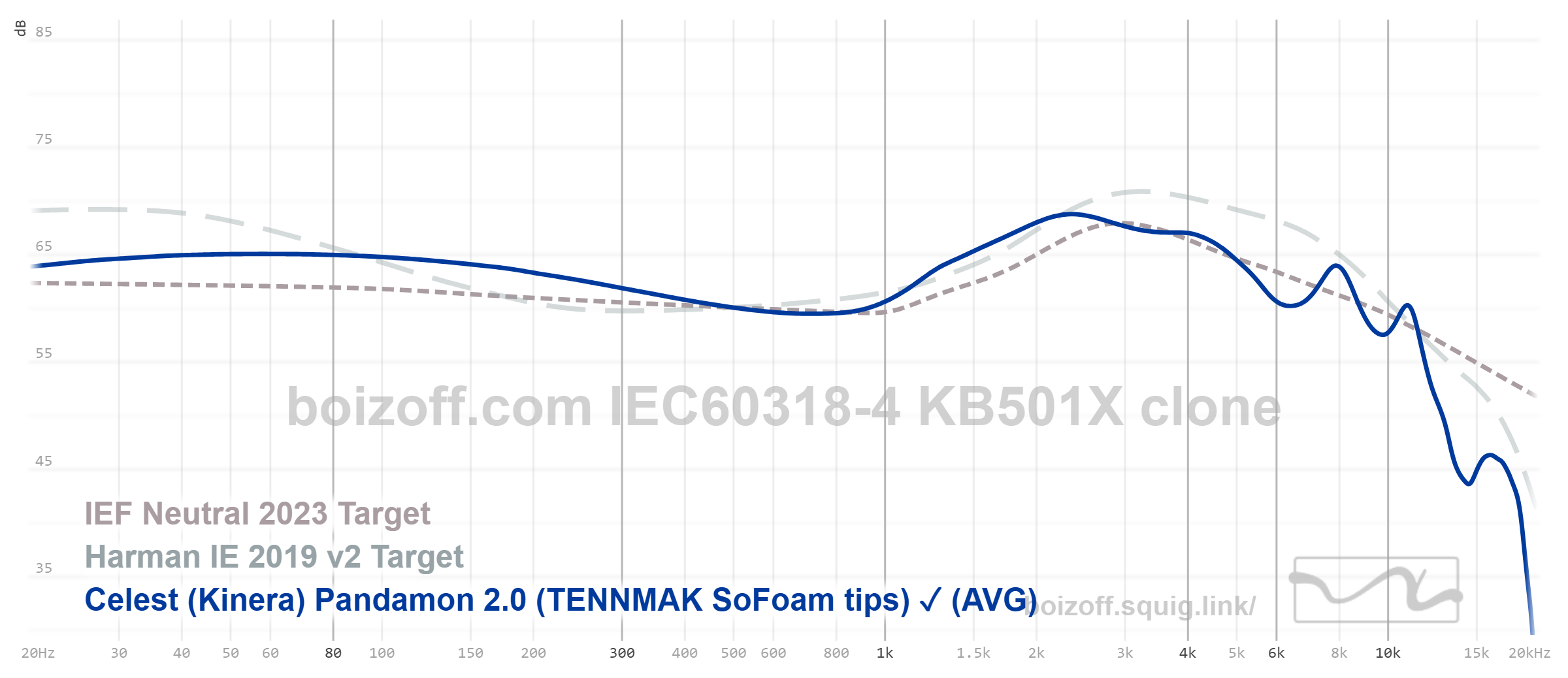
Kefine KLEAN (silver filter): with a black filter, the sound gets an unpleasant shrilly hue, but the silver one makes the sound delivery comfortable and ‘warm’. This is one of the best implementations of such tuning for chump change. The enclosures are metal, the ergonomics is universal. Two specimens that I have basically ensure the same measurements.
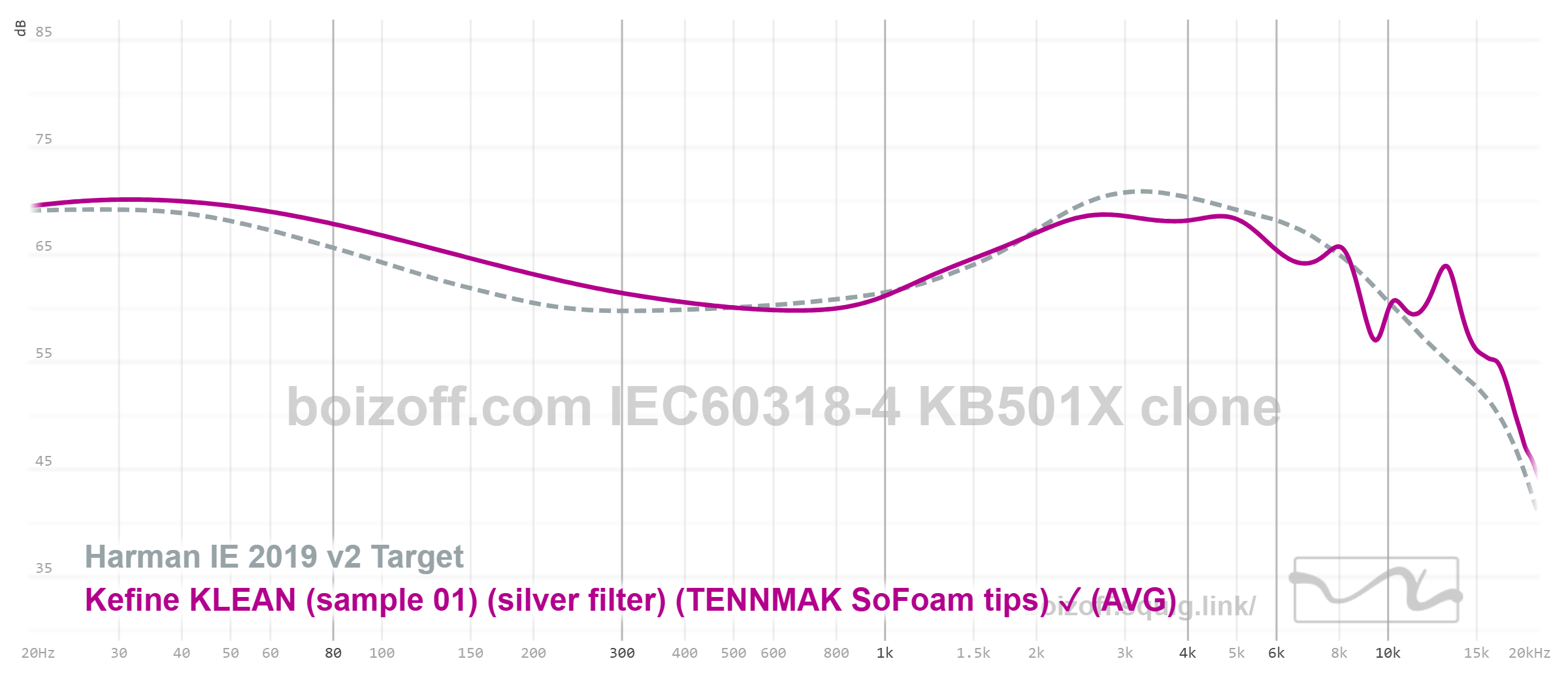
CCA Rhapsody (with tuning 1001): of all 16 tuning options provided by 4 two-way switches, I recommend 1001. The frequency response becomes close to the Harman target curve, with the exception of bass – there is more of it — and a large rise at 8 kHz. You can read more in my article.
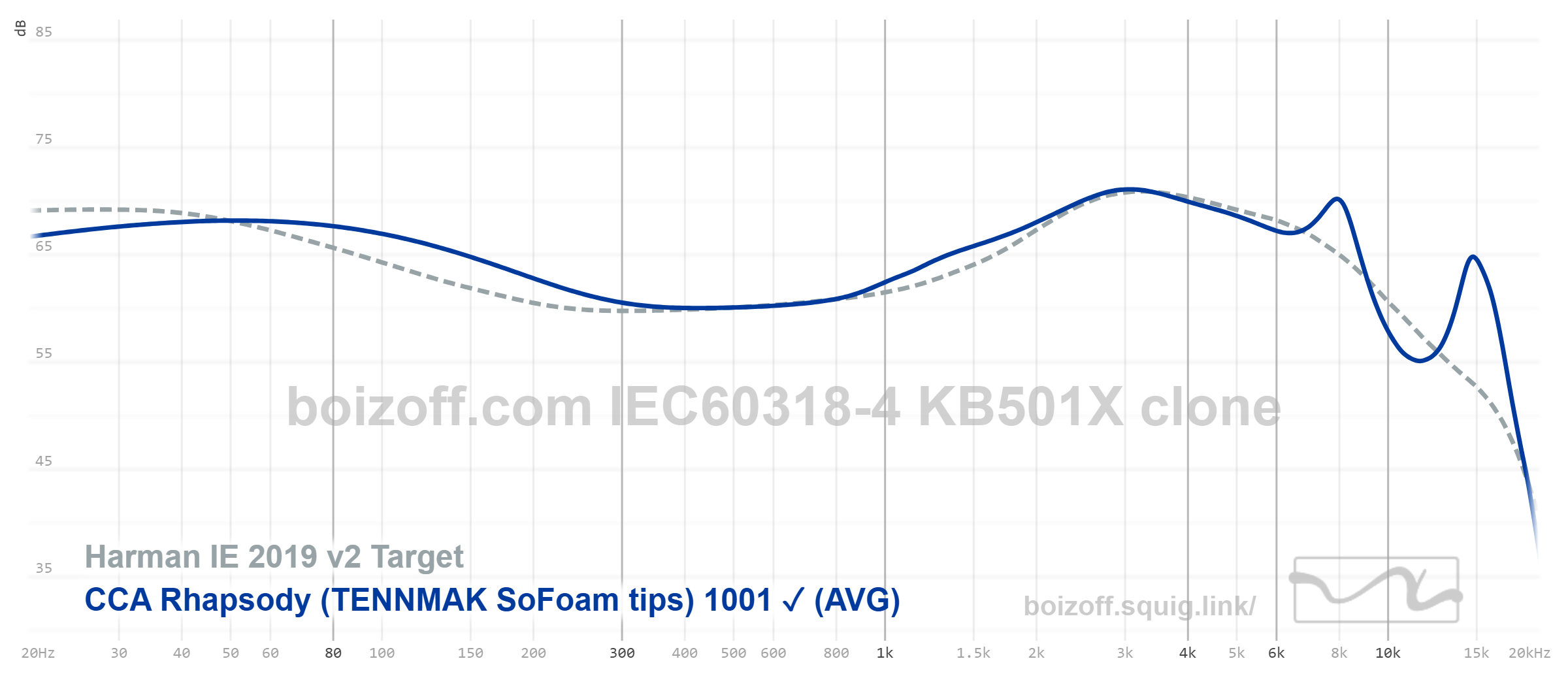
Aoshida E20: released under the direction of Letshower Audio, E20 have an incredibly ‘whippy’ and ‘fast’ (i.e. separated from the bass) subbass, as well as a precise, detailed ‘top’. There is more top than suggested by the Harman curve, but the sound doesn’t grate on your ear and doesn’t have any parasitic shades. Attention: E20 must be properly located in the ears, that is, the enclosures must touch the auricles! This is very important! The earphone must not dangle around the eartip. If this rule is not followed, you’ll get a nasty ringing and grating horror. If you do everything right, you’ll get one of the best lightened tunings ever, regardless of the cost. My advice on eartips is Whizzer ET100AB (I wrote about them here). E20 is my new personal budget-friendly love.
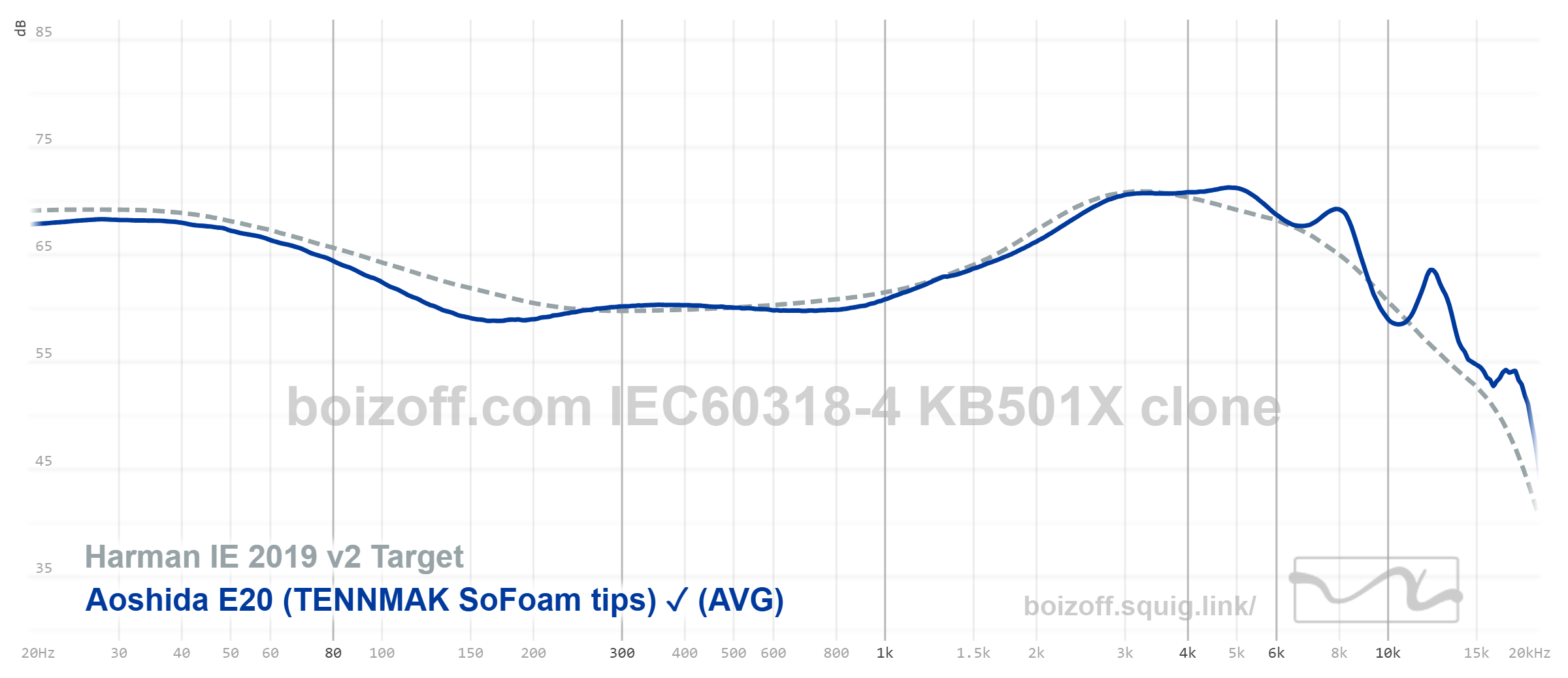
2.6 Category from $50 to $70
Simgot EA500 LM (golden sound ducts with red rings): it doesn’t matter if you listen to Mozart, Placebo, Manu Chao or Vesta, as EA500 LM make Rammstein out of any music. Anything sounds assertive and aggressive, sonorous and percussive. The only thing that EA500 LM can’t do is to let a listener get some rest.
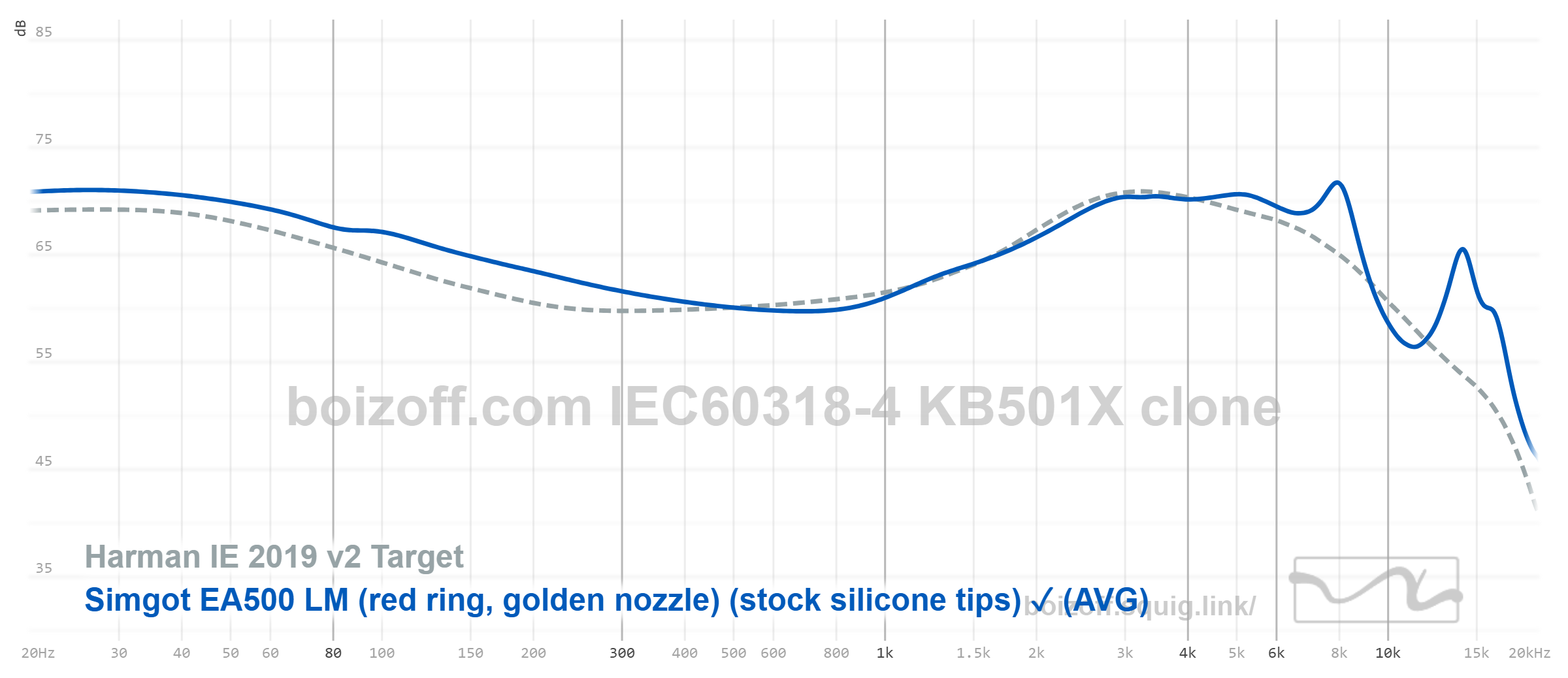
TRUTHEAR×Crinacle ZERO: RED: I wrote a review about them, so, in a nutshell, they are fucking awesome. The only embarrassing thing is the difference between the production samples: my practice shows that it can be very large.
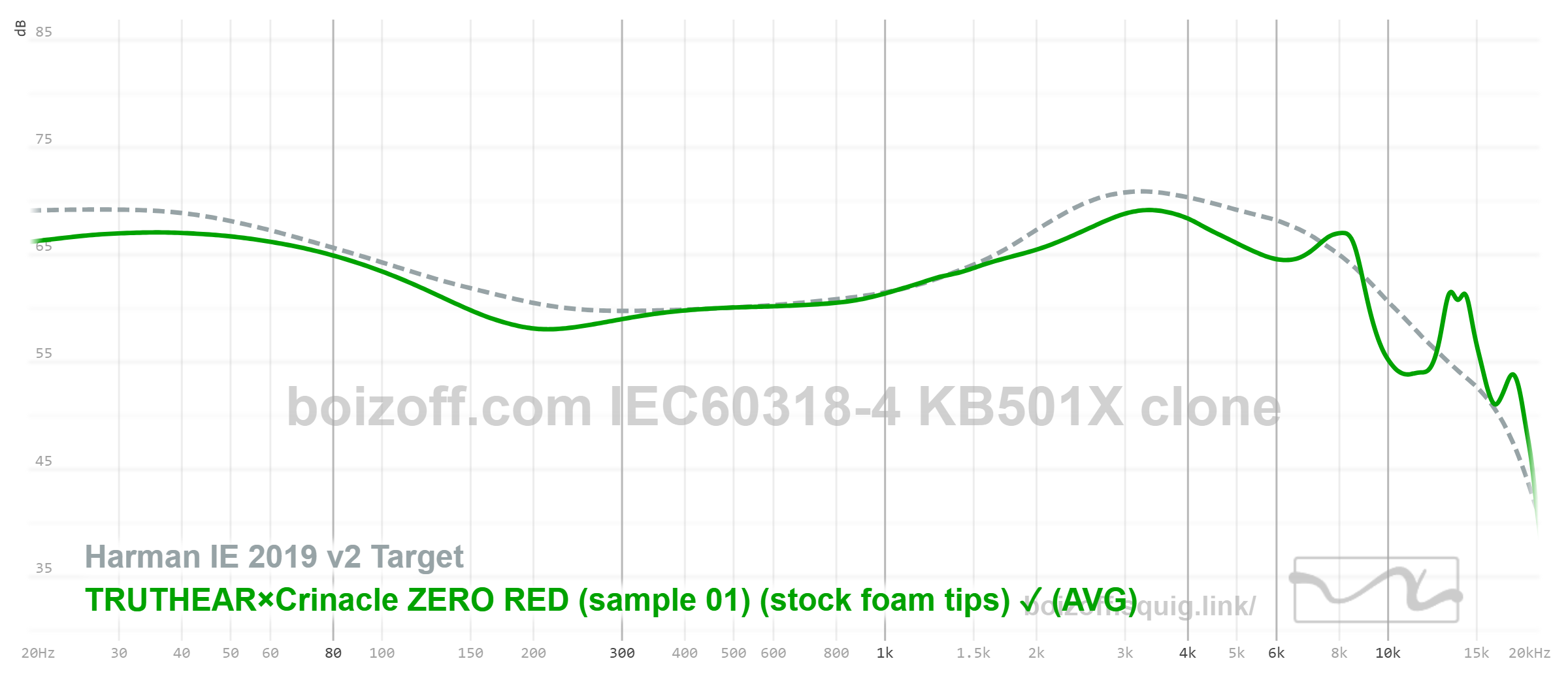
Twistura Sigma: Great IEMs with neutral sound that don’t often pop up in the audio discourse. They are good in themselves, and as an answer to the question “What to buy if you want Etymotic sound, but don’t want their ergonomics?”. They are perfectly assembled, convenient to use, and a microDAC is included. I can only complain about the physically long impedance adapter.
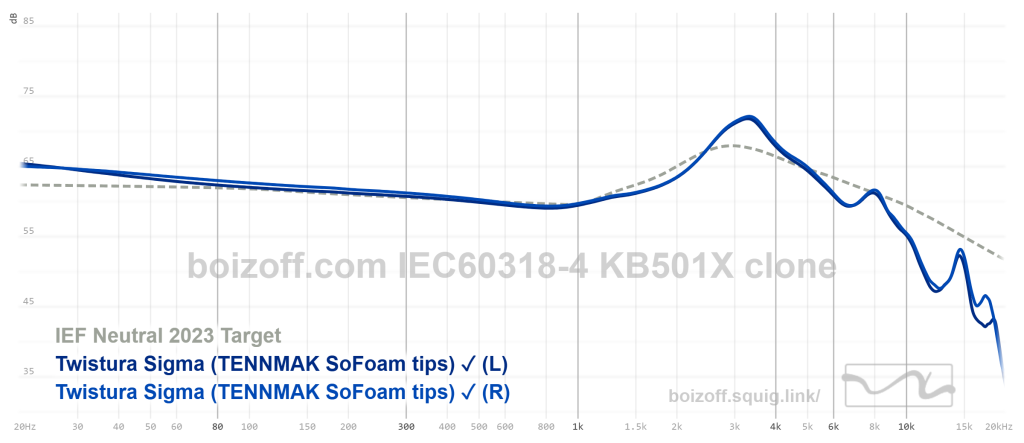
2.7 Category from $70 to $100
Shanling TINO have very comfortable small enclosures with beautiful plates and a glamorous cable with changeable connectors. The sound emphasizes middle and upper frequencies, and only the few manage to implement this smoothly. But Shanling did it in their TINO model. Don’t be afraid of these peaks on the graph — it’s better to listen to them with your own ears.
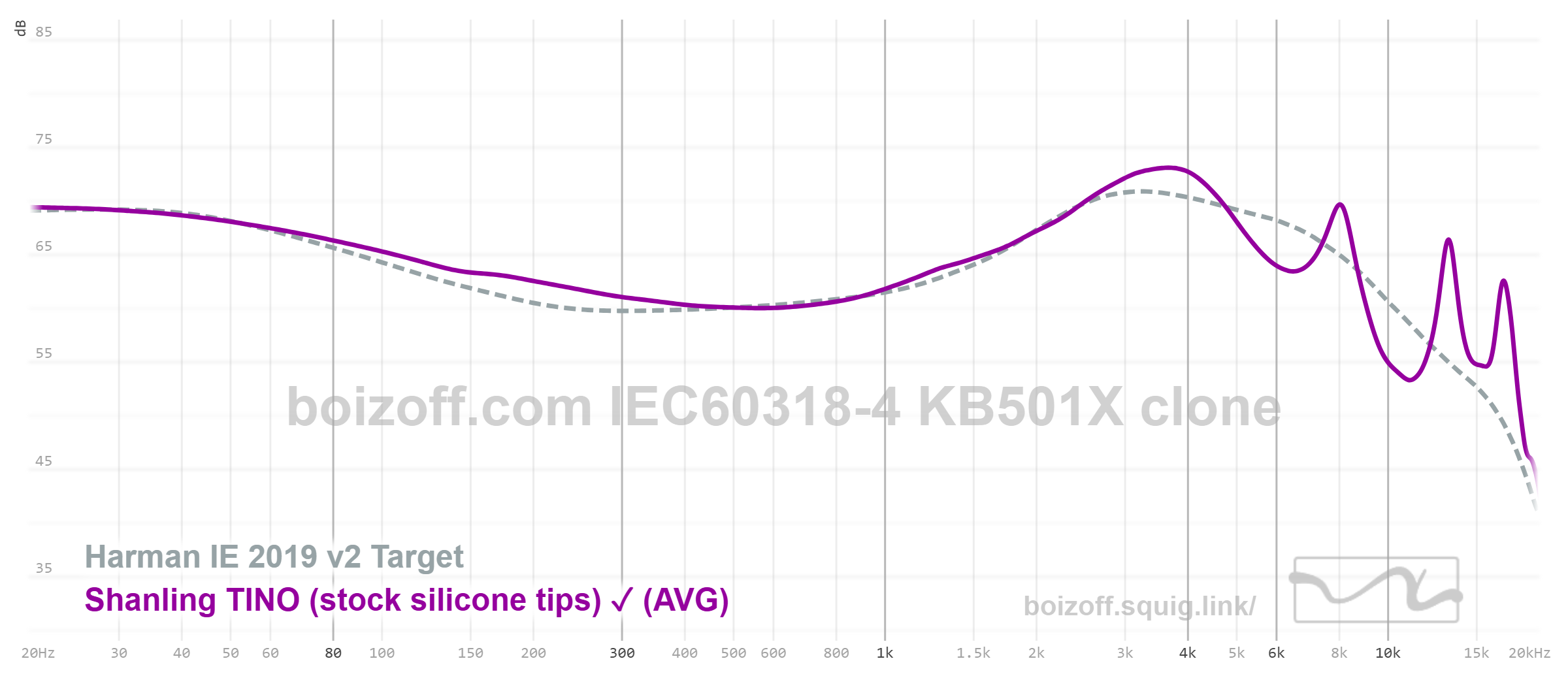
Simgot EM6L: the frequency response of these earphones seems to be completely shifted to the right in relation to the Harman curve. Usually such experiments end up badly: the sound delivery turns out to be tonally unreliable, that is, you listen to music, but everything sounds somehow … wrong. EM6L don’t have this problem: the sound has just become somewhat ‘thinner’ and ‘lighter’ than usual, which leads to a feeling of balanced sound delivery. I’m not a fan of this model, but it doesn’t make these earphones worse. They’re great.
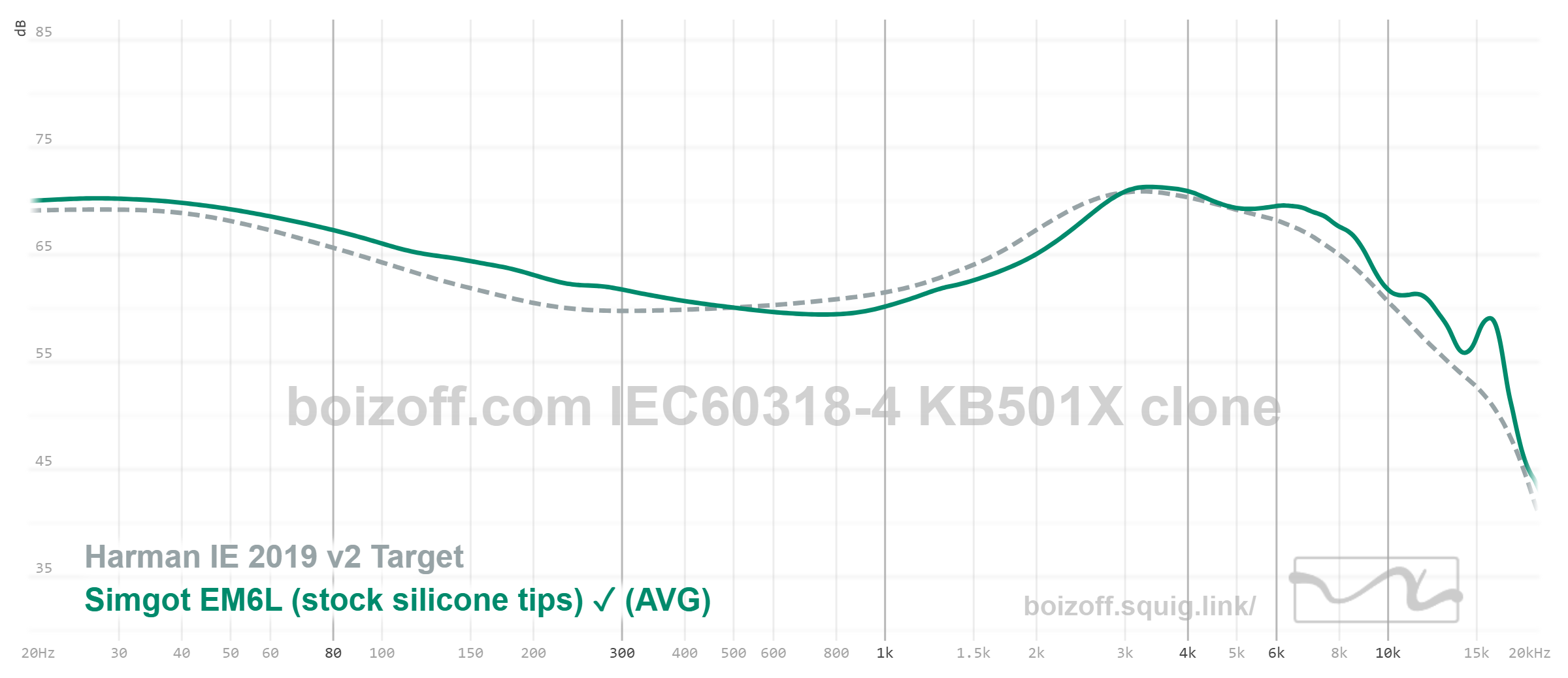
Rose Technics Star City 5 Pro is my personal, special, secret love. These earphones deserve much more attention from reviewers than they actually have. They have very versatile enclosures of interesting design, meant for a deep fit, and a micro DAC included (!). Their sound is neutral to warm. There is no pronounced clubbing subbass or bright ‘top’ — it’s all about balance and a clear middle. You can find two versions of them online: an old one for MMCX and a new one for 2-pin.
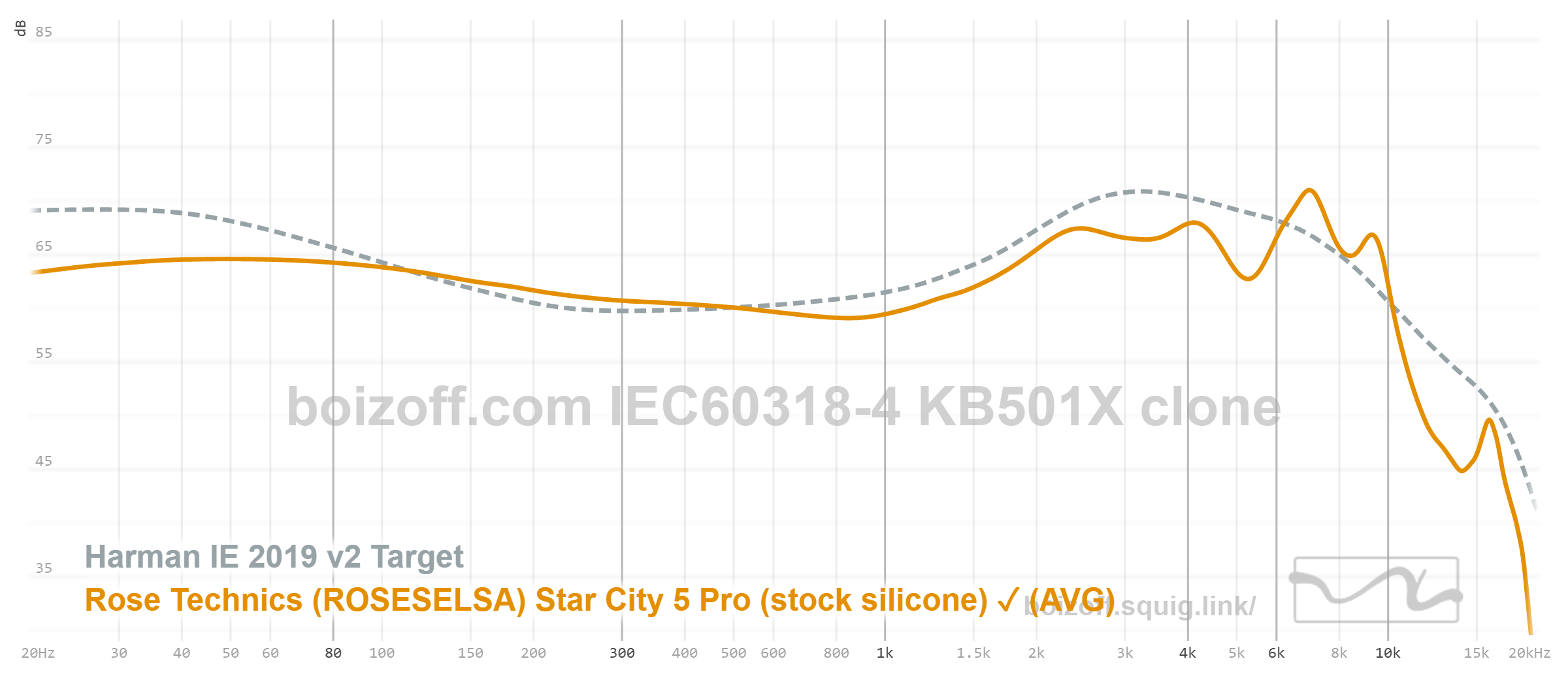
Truthear HEXA are the earphones that are practically neutral to my ear. They have very versatile enclosures (though they never look this way) and a very pleasant, natural ‘middle’. Read more in my article.
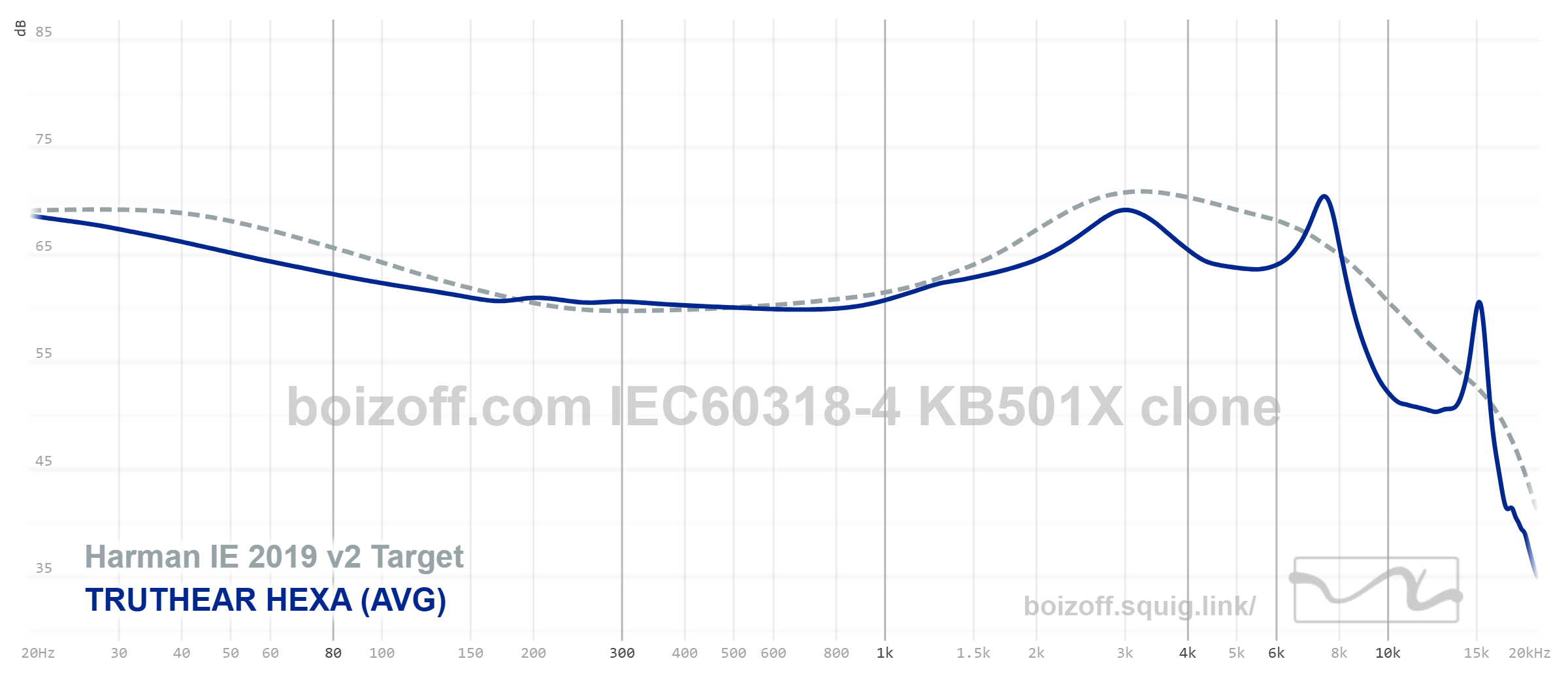
2.8 Category from $100 to $150
Truthear NOVA are a flagship product of Truthear. NOVA play incredibly well – balanced, wide, etc. It’s hard to find fault with their sound, even if you want to, but you can complain about the quirky shape of their large enclosures and the earholders scratching your skin (because they are too short).
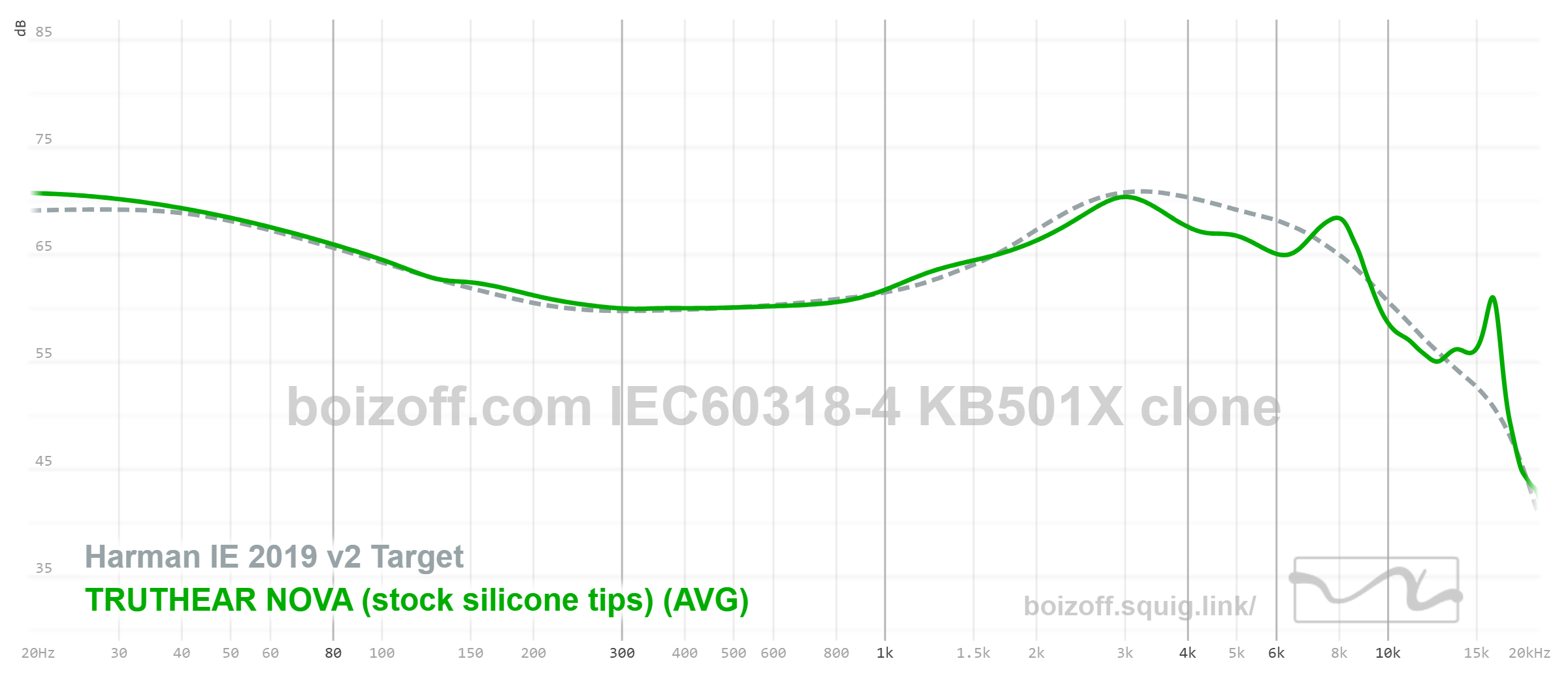
2.9 Category from $150 to $200
Binary Acoustics × Gizaudio Chopin are some of the best V-shaped earphones above all price categories. I can’t consider their mediocre appearance and idiotic box as real disadvantages, but a perfectly balanced, really ‘evil’ sound, extended high frequencies, and small enclosures that are universal in terms of their fit are absolute advantages. Read more in my review.
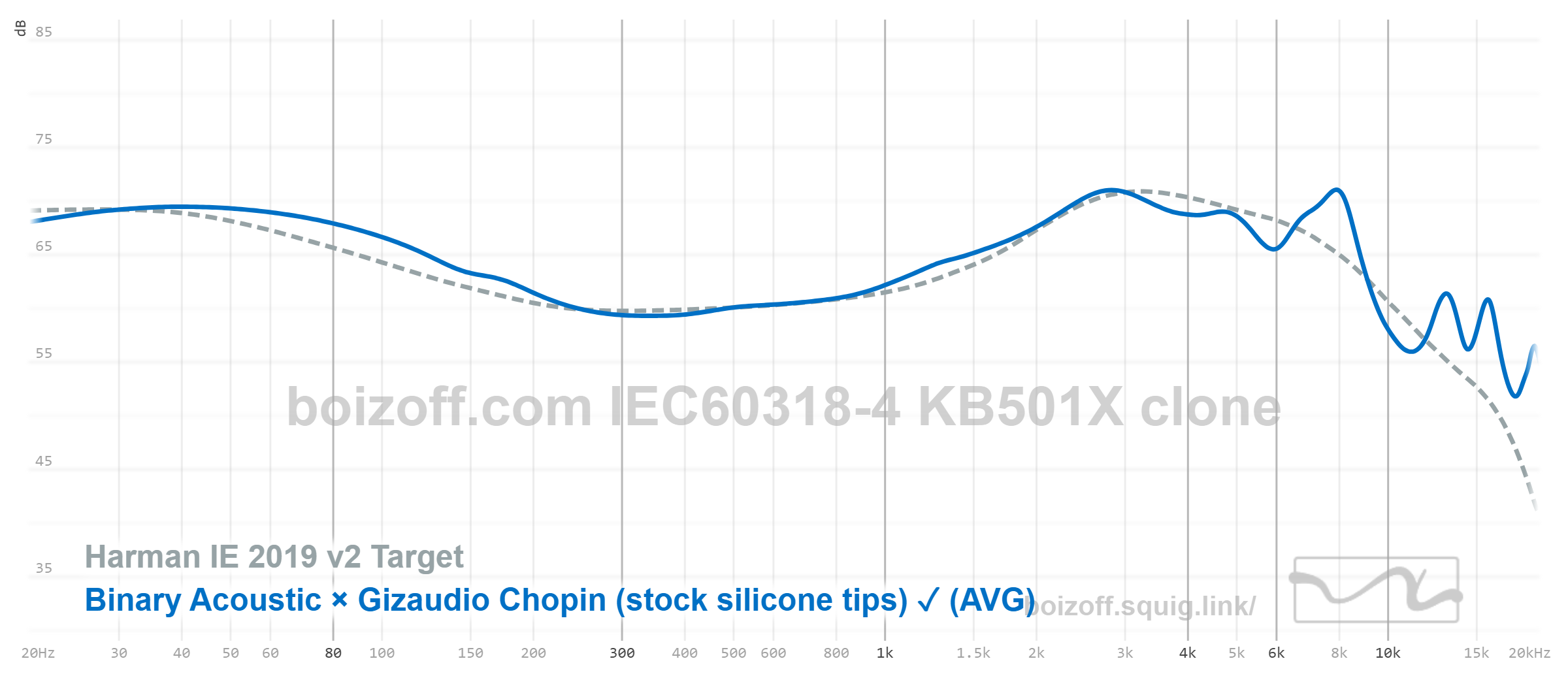
Kiwi Ears Septet TBD

Kiwi Ears Quintet are very carefully tuned earphones for those who considers Harman sound delivery to be a little shrilly, who want more warmth in the sound, but without losing all other sound qualities.
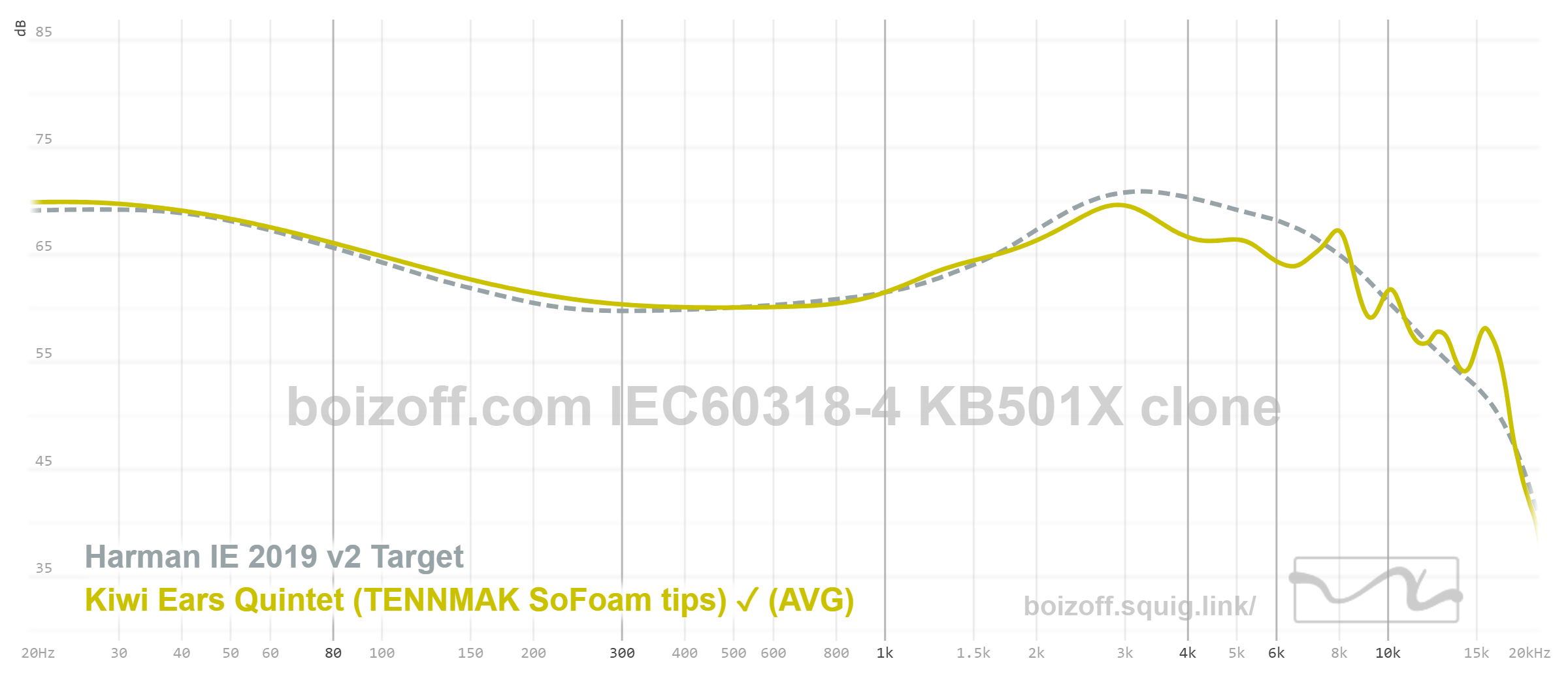
TRI I3 MK3 are bright purple earphones with a very neat, neutral sound. Reserved subbass was supplemented with dry bass, a very beautifully sounding middle and extended tops to the very end of the aural range. You can call it ‘monitored sound delivery’, but it’s better just to say that TRI sound naturally and 3D-likewise. TRI CLarion eartips are included.

Meyr Audio SLIIVO SL41 MK2 have meta-tuning with an additional focus on subbass and extended technical tops. The tuning is dangerous, on thin ice in terms of intensity of upper frequencies, but the manufacturer did it. The earphones perform well in instrumental and electronic music, as well as in games. In all other genres, they’re just very good. In metal, they’re bad.
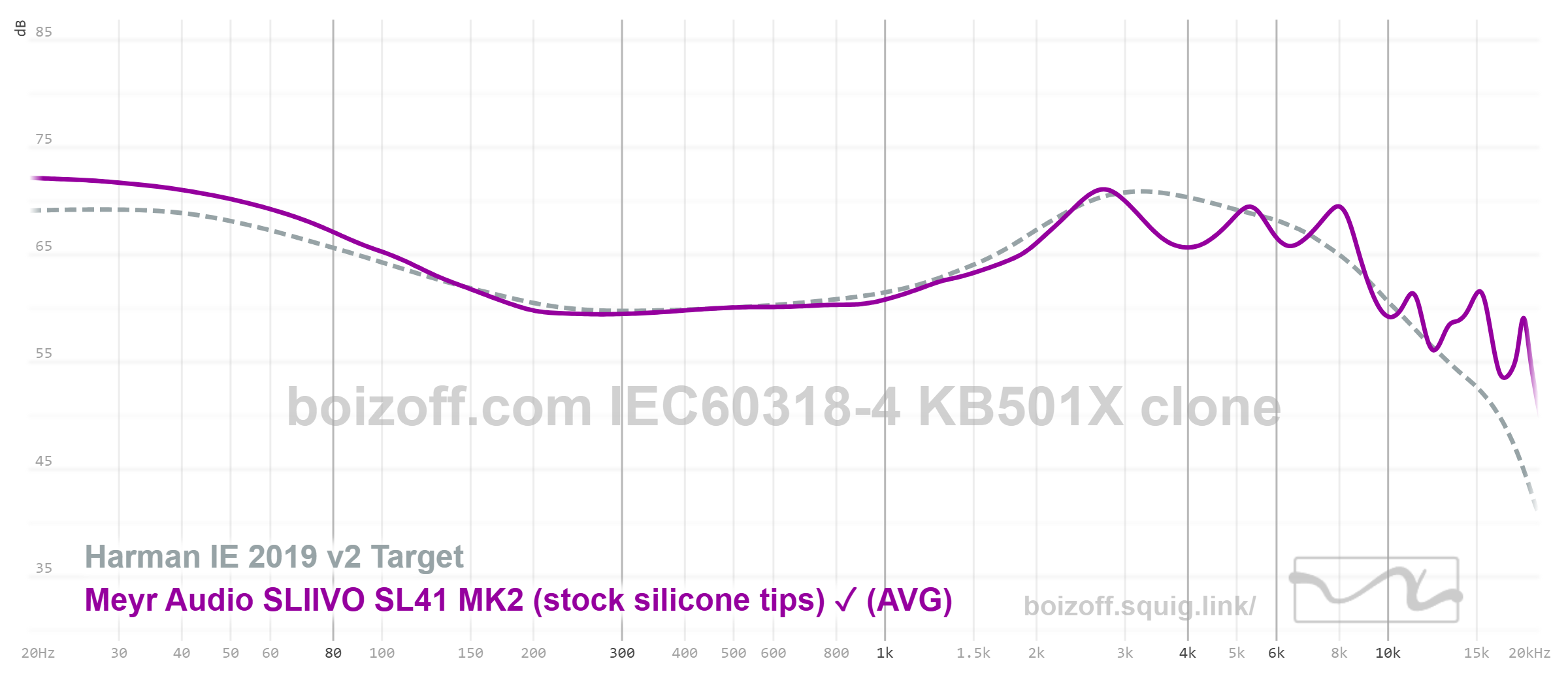
2.10 Category from $200 to $250
PULA ANVIL114 are those ‘new earphones with a bone conduction driver’. They’re not the first ones, though. There are very large enclosures that noticeably resonate after flicking on them with a nail, as if there is a spring inside. The sound is comfortable, up there with Star City 5 Pro (see sec. 2.7), warm, but with a pronounced ‘top’. Compared to the neutral curve, ANVIL114 have more bass and ‘top’ at about 8 kHz. Compared to the Harman one, they’re short of subbass and mid frequencies. By ear, this sound delivery is perceived as V-shaped and kind of warm, but with pronounced upper frequencies and a wide sound stage. And, well, apparently due to this bone conduction driver, ANVIL114 can sound very low. VERY. LOW. Here you can feel what 10 Hz is like. It’s when you go deaf 10 times per second. Some earphones can’t do anything like this at all, actually. The kit also includes a glamorous case, a glamorous cable and 12 pairs of eartips. My compliments! For a normal fit, Whizzer ET100AB or Zhulinniao Zhu Rythme are strongly recommended.
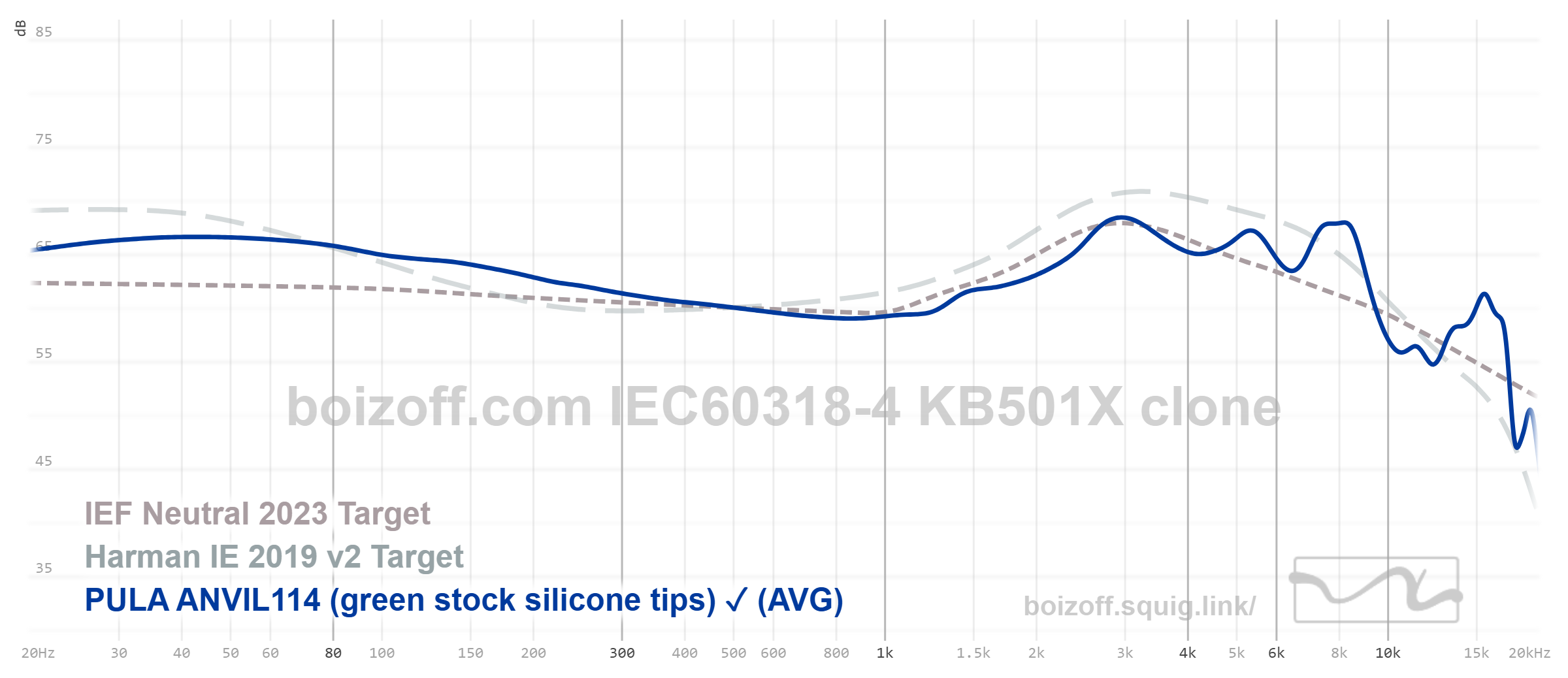
Kiwi ears Orchestra Lite are earphones with an amazing sound, the tuning of which is built up ‘around’ a slightly accented middle (see 1.5 kHz emphasized). Orchestra Lite require increased volume to make their sound delivery truly ‘delicious’. In compensation, they provide ‘a lot of sound’, as if you hear everything at once (the effect is a bit like Wan’er SG, but with all the flaws fixed). I’ll add to this a great sound stage and incredible instrument positioning, extremely dry bass and subbass, as well as effective noise insulation. The drawbacks include very large (though ergonomic) enclosures, the lack of a pressure compensation system (you’ll have to take your time to stick them in your ears without feeling stuffy), and the need for a deep fit to get the right sound (I recommend such eartips as Whizzer ET100AB or EPZ). There are also no chamfers for attaching eartips to the sound ducts. Thanks a bunch, dear designers.
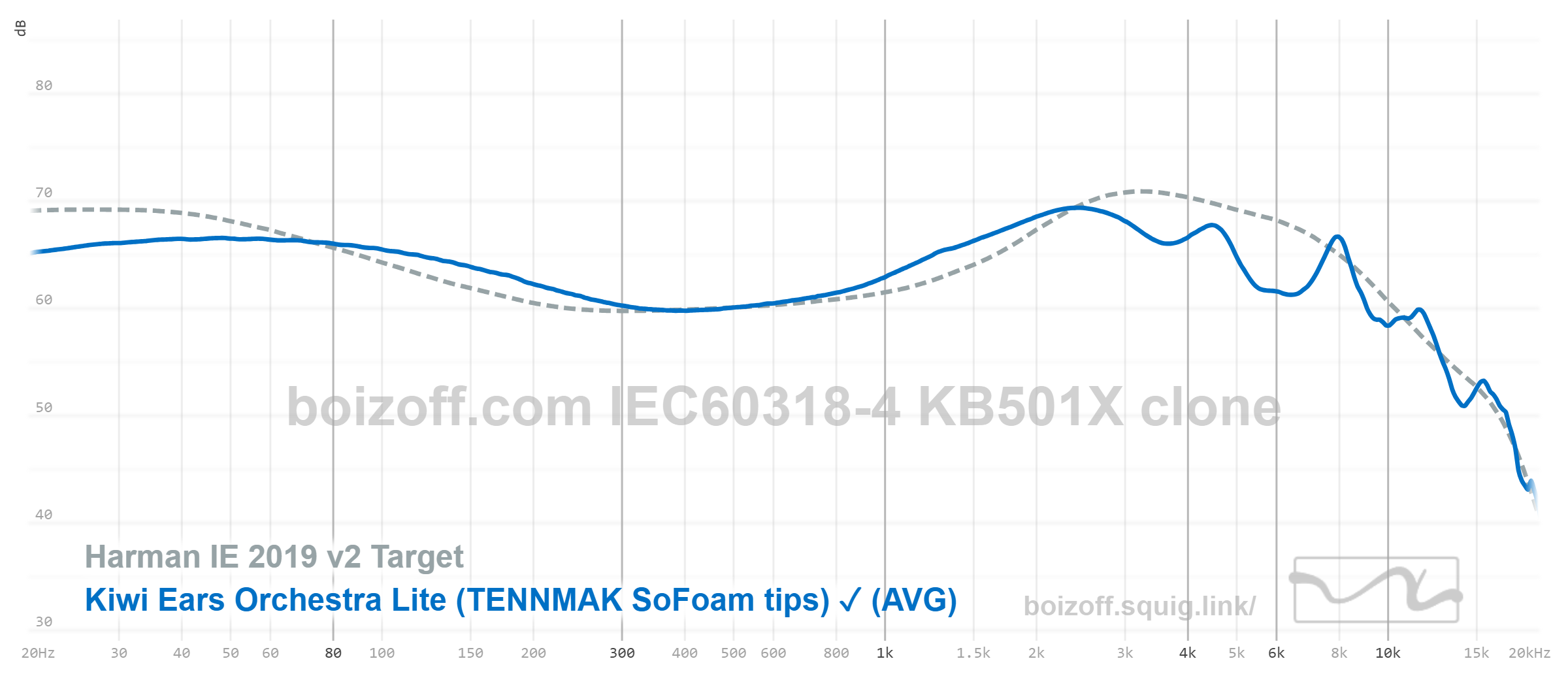
Letshuoer Cadenza 4: a very neat “audiophile” neutral-bright tuning, which will require a deep enough fit. A “wide” balanced sound delivery with an addition of “technical brightness”. The pleasant thing is the unusual, soft-touch-like plastic of the cases, which does not collect fingerprints at all. The unpleasant thing is the specific shape of the housings, which may not be suitable for small ears with a deep fit.
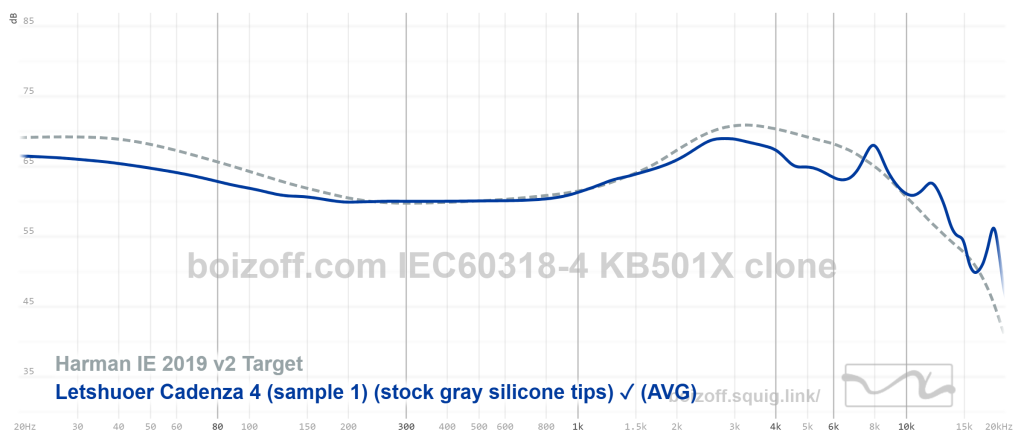
Meyr Audio SLIIVO SL224: TBD
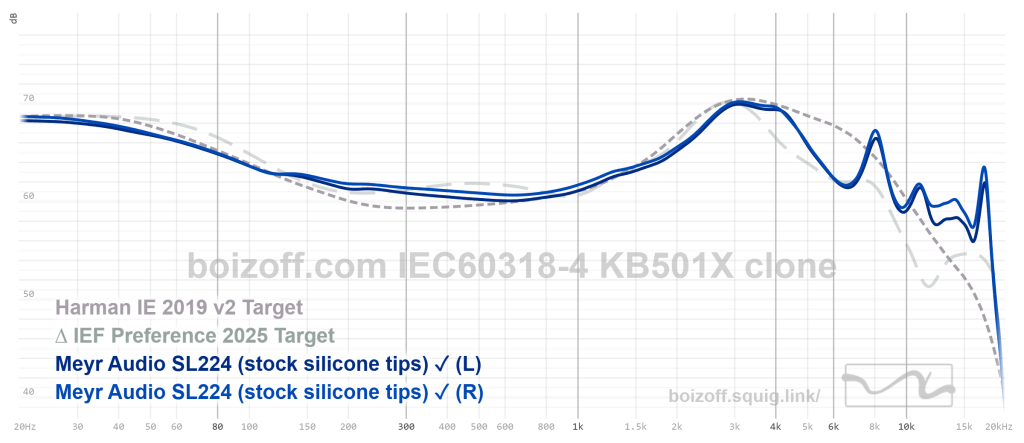
2.11 Category from $250 to $300
ZiiGaat Estrella: the V-shaped pitch is, well… a low audio genre, it’s not rocket science, yeah? Even more ringing, even thicker bass, everything is quite predictable. This kind of sound is the lot of cheap mass-produced earphones. But Estrella is a rare example of how to make this sound delivery incredibly good and technical. Here you get pleasure from not very realistic, but extremely ‘delicious’, ‘festive’ sound. Add one more decibel from below or above, and it’ll be impossible to listen to it. But Estrella stops at the very edge. How ZiiGaat engineers ‘ended up’ in this very tuning is a mystery.

Moondrop Blessing 3: the earphones are so ‘dry’ and technical that even I am ready to complain about the lack of the ‘bottom’. Blessing 3 measure everything in grams. This is an absolutely neutral tuning for my ear, encouraging not to enjoy listening to music, but to look at it under a microscope. The delightfully balanced sound of Blessing 3 will be a real gift for those who seek a truly unadorned sound delivery.

2.12 Category from $300 to $500
Moondrop Variations are the earphones, about which I can only say that they sound ‘right’. Everything is good in their sound, everything is correct, everything is balanced, and there are exactly as many frequencies as necessary. Of all the in-ear models that I’ve tested, I personally like Variations most of all.
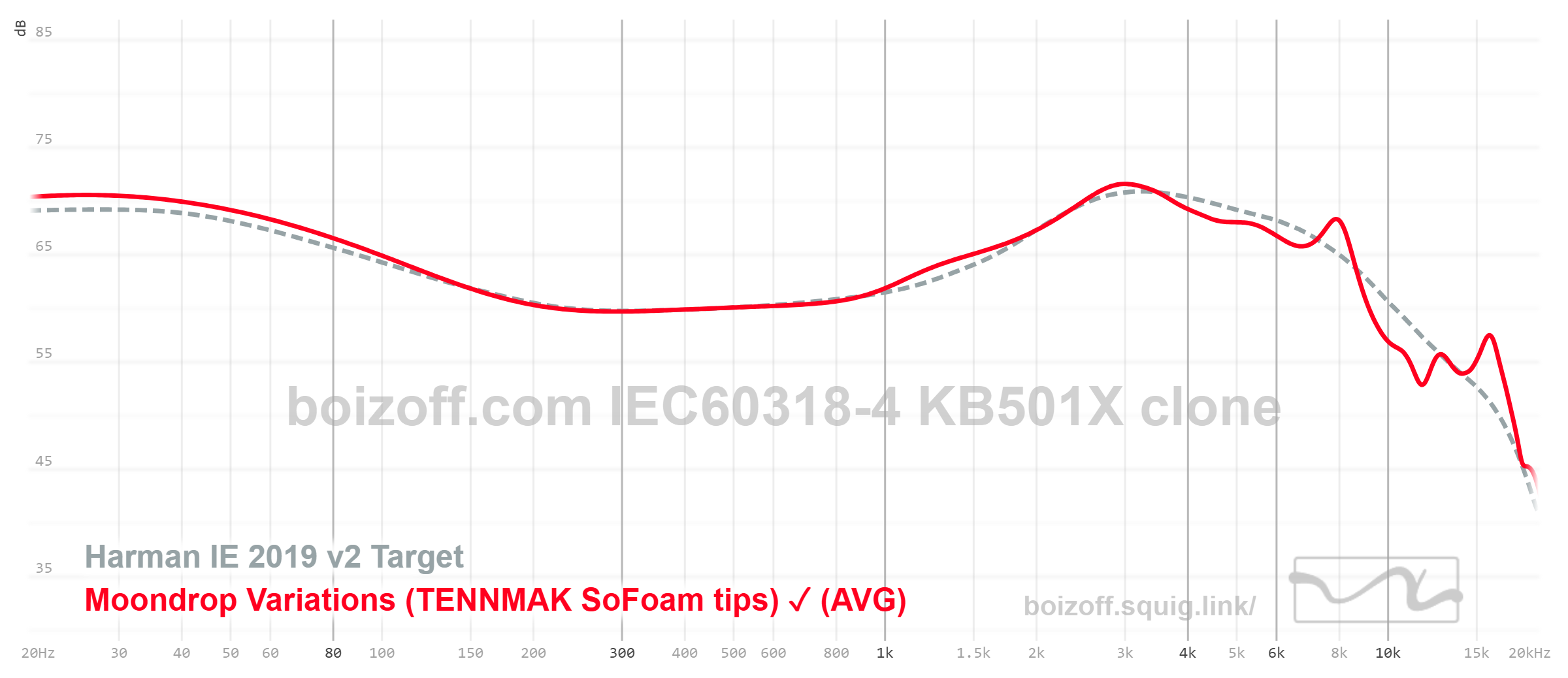
2.13 Category from $500 to $700
Hisenior Mega5-EST are warmish-neutral earphones tuned in the latest fashion. They never disturb your ear and are perfect for competitive games. The only thing that failed just a little bit is the attachment of cable connectors. The fit is somewhat controversial, too. I wrote a big review about them, so I don’t want to repeat myself.
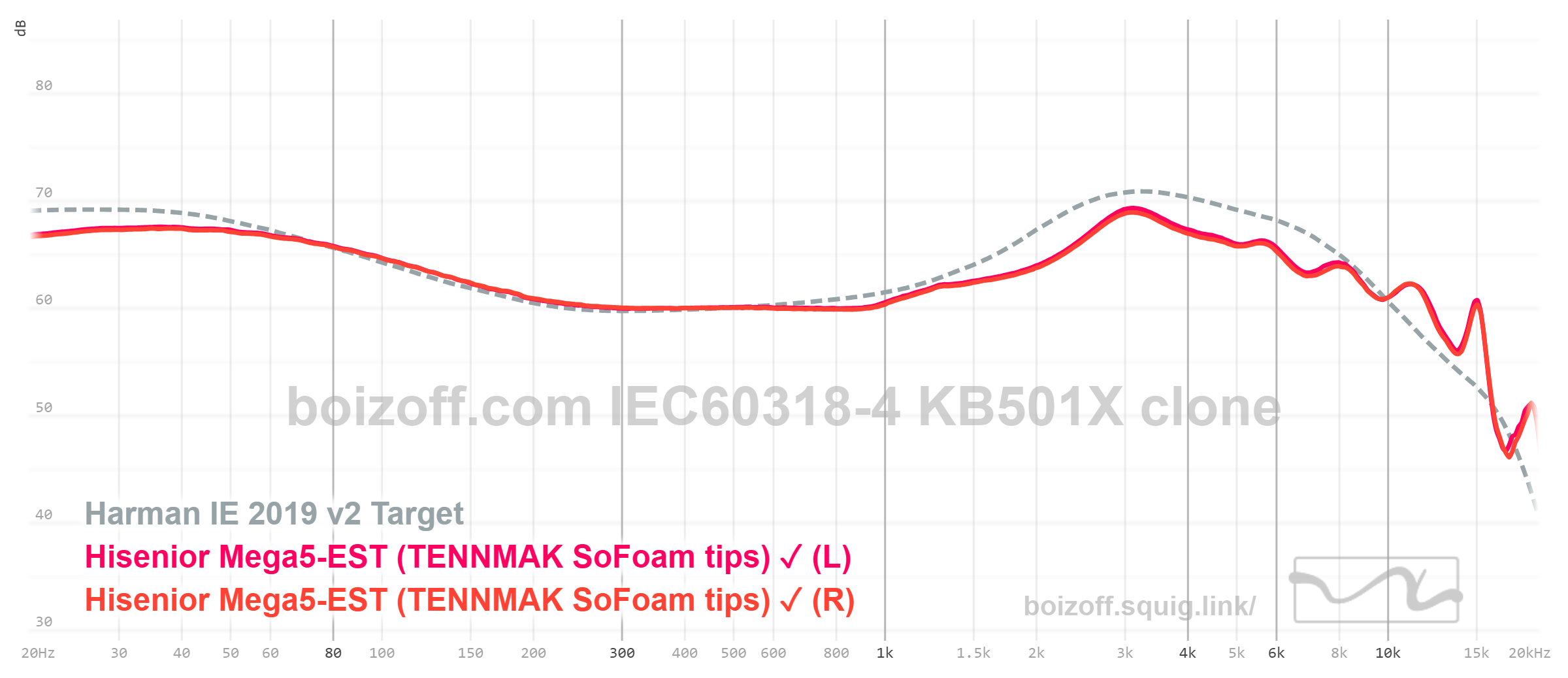
Elysian Acoustic Labs Pilgrim are very specific, the best earphones on this list in terms of high and ultra-high frequency detailing. When we say ‘detailing’, we mean Pilgrim. The earphones pull out all the sounds that are present on the track out of it, including the ones you probably don’t want to hear. Therefore, you’ll have to think hard about the choice of audio material in terms of both style and quality of recording: these are the only earphones with which you can really hear the difference between mp3 and flac. And along with that, they don’t grate on your ears. They’re ideal for academic music, for any instrumental genres, but bad for metal, post-rock, and anything else that can’t boast really high recording quality. Their disadvantages are short sound ducts (SpinFit CP100 are recommended, but KZ Straline are even better), impractical air-scratching enclosures, as well as Pentacon connectors. But the main disadvantage is that the volume at frequencies of 2.7 and 4.7 dB is brought to the same level, while the subbass exceeds the volume of the first resonance by 1.4 dB (according to Harman, it should fall behind by 1.7 dB). That is, I’d be happy to make it louder, but when the midrange begins to sound well enough, the subbass is already banging on my head with a sledgehammer. Whether you get used to such sound delivery or not, whether you love it or not, it doesn’t matter: Pilgrim will definitely surprise you.
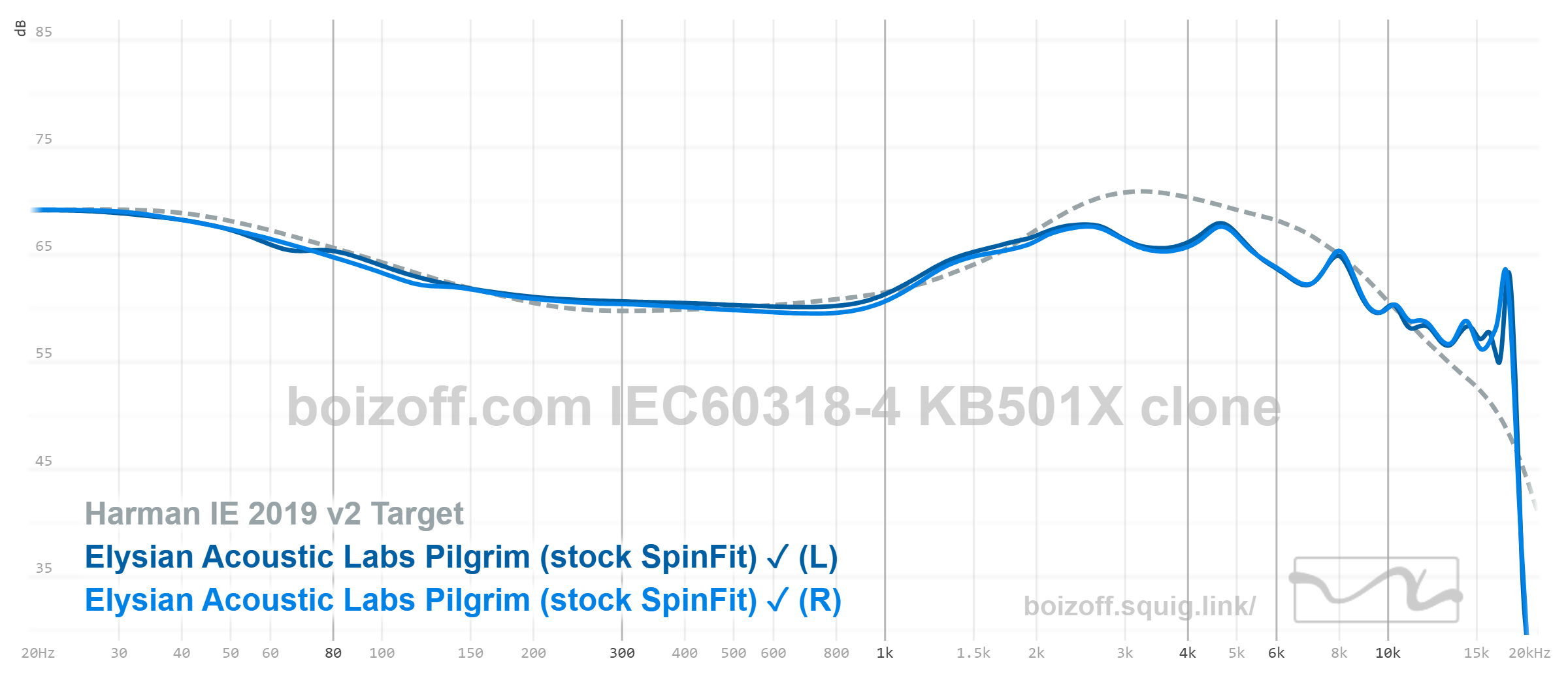
3. About all the other earphones that I thoughtfully tested and tried on
| Model name | What’s wrong with it |
| 7HZ G1 | Due to the excessive peak, the G1 sound can be used to torture people. |
| 7HZ × Crinacle Zero 2 | Everything wouldn’t be bad if it weren’t for a very specific shape of the enclosures, short sound ducts, as well as the existence of competitors who don’t have these disadvantages and just sound better: KBEAR KB01 and Truthear Gate. |
| AFUL Audio Explorer | Explorer have too much bass for a neutral tuning and a lack of middle and upper frequencies for a warm sound and even for the Harman curve. Many people call this ‘comfort tuning’. I call this ‘faulty tuning’. |
| AFUL Audio Performer 5+2 | It’s the same ‘AFUL house sound’, but freaked out: from 2 to 6 kHz, the frequency response graph is flat. As a result, there is timbral unreliability, inferiority of sound. But for $250, seriously?! |
| BGVP DMA | A booming bass, literally humming on some tracks. Upper frequencies play separately from the lower ones. But if you want such a sound delivery, buy Chopin: they’re even one third cheaper. |
| Celest (Kinera) Rue | Probably, Rue can be called basshead earphones, but I would characterize their sound as inferior. Actually, just look at the frequency response graph. It’s really expressive. |
| Celest (Kinera) Wyvern | The problem with the Wyvern model lies in the existence of another model, Wyvern Abyss: the latter doesn’t have an emphasis at 2.5 kHz, and the top is slightly smoother. |
| Celest (Kinera) Wyvern Black Remastered | I wasn’t thrilled with the first Wyverns, and the remastered version was slightly spoilt: the sound gained more emphasis on the midrange, but with this sound setting, it wasn’t worth muting the subs. Dips at 6 and 10 kHz are in place. It turned out to be just another passing model. |
| CKLVX CK-D62 | Everything is spoiled by a sharp emphasis at 13 kHz. And there are also excellent ANVIL114 nearby, in the same price category. |
| CLAVELON DELTA | The specific shape of the enclosures, which doesn’t contribute to a deep comfortable fit, as well as just a tuning error — it’s hell of a peak at 14.5 kHz. This peak is there, it’s audible and highly disturbing. I’m sorry, but such tricks for $100 are not very classy in 2025. |
| DUNU × GizaudioDaVinci | |
| Etymotic ER2XR | Sometimes it happens that ergonomics ruins earphones. |
| Fiio × Crinacle FHE: Eclipse | |
| Arpegear Hane | The switches work and even change the sound significantly. But, in all variants, the sound lacks the top, then the bottom, then … no matter how you click the switches, Arpegear cannot form a deliberate tuning, with their price, however, equal to one of Truthear NOVA. |
| Hidizs MS1-Galaxy | A humming bass goes hand in hand with a wishy-washy middle; ahead is a lonely Everest at 8 kHz. The sound delivery is absurdly unbalanced. |
| Hidizs ST2 Pro | Just look at the frequency response graph at 8 kHz. |
| Inawaken Dawn MS | Everything’s fine with these earphones but the context: $45 for this sound doesn’t seem adequate when there are cheaper Gate and G10 in place. |
| INTUAURA Reference 2019 | The tuning of this model was supposed to fit exactly into the Harman curve, but it missed: the upper frequencies grate on ears. |
| KBEAR KB02 | These are just poorly tuned earphones. Besides, look at 200 Hz on the frequency response graph by setting the SMOOTH parameter to 0. The spectrogram shows a fiery sword… |
| Kiwi Ears Melody | A rustling, ringing slip-up. |
| KZ Castor (Harman) | No matter how you click the switches, at best you can get a tuning like ‘still too little bottom, already too much top’ (1100), that is, the sound is disembodied and shrilly at the same time. |
| KZ Castor PRO (Harman) (1100) | See my comment on KZ Castor (Harman). |
| KZ Saga | Saga are EDC Pro in a metal case, but twice as expensive. |
| KZ Vader (HiRes version) (0110) | Vader surpass Castor in terms of tuning balance, but it’s in the same price niche as KB01, Gate, EW100P and other earphones that it’s unable to compete with. |
| KZ ZSN Pro 2 | Too much carelessly raised top. |
| LETECIEL MIRA | A sharp, peak-overloaded upper frequency range. |
| Moondrop Chu | No longer in production. |
| Moondrop Chu 2 | I would recommend them if there were no KB01 with a neater top. |
| Moondrop Concerto | A rare model discontinued immediately after its release. The sound tuning is completely ‘broken’: the bass hits your head with a sledgehammer, while the upper frequencies are scraping and whistling. Those who bought it, please don’t throw it away, hold off for now! In some 10 years, idiots will be hunting for them, just as they are running after MDR-R10 now. |
| Moondrop LAN | |
| MOONDROP May | The tuning itself (Standard preset) isn’t great shakes for the money that is charged for May, while handling other presets is complicated because Moondrop doesn’t know how to code decent software. It turns out that as ‘just headphones’ with a single setting, they are overrated, and as headphones with a full-fledged DSP, they simply do not work. |
| Nice HCK NX8 | Incorrect tuning of the 3-8 kHz range, as well as the peak after 10 kHz, somewhat spoil the overall very good picture. If these headphones cost less than $110-130, we could safely recommend them. What the company can’t take away from it is its own vision of sound delivery, house sound. It seems that after a while we will see very interesting models from them. |
| Night Oblivion Butastur | The only IEMs I’ve ever tested which sound is not spoiled with a 3.5 dB accent at 1.5 kHz. The sound turns out to be specific: some things sound incomparably good, while others are tonally inaccurate. My main complaint is that this tuning is tailored too narrowly. |
| QKZ HBB | HBB are ‘overdone earphones’: over-bass with an under-middle and a peak at 8 kHz. Better than Rue, but worse than EDC Pro. |
| Simgot EW300 DSP/non-DSP | In the best scenario (silver sound ducts, no matter with or without DSP), their sound is worse than that of KLEAN. But KLEAN are 1/3 cheaper than EW300, and they also have a better top and don’t have that dip at 10 kHz. The filters inside the EW300 sound ducts actually cut no figure. |
| Simgot SuperMIX 4 | The only thing that spoils a very decent tuning is a nasty, unnatural-sounding range after 10 kHz. The shape of the enclosures is so comfortable, and the cable is so beautiful, but … it’s just a shame. |
| Sivga Que | In a strict sense, the problem with Que is that other earphones do also exist in this world. As a spherical cow, Que are good. In actual life, there are Wyvern Abyss or G10 that are cheaper and sound better as well. |
| Symphonium Audio Meteor | OK, we take Explorer, pile up the bass, and accentuate 2.4 kHz. Whoa, not working! |
| Tanchjim OLA | If (iff!) you manage to fit itty-bitty, cornered OLA enclosures at least halfway comfortably in your ears, you’ll hear almost nothing but sibilants. |
| Tanchjim ORIGIN | Even with transparent rings on the sound ducts that whip upper frequencies and a peak at 13 kHz into shape as much as they can, ORIGIN fail to sound natural, especially at high volume. At a lower volume, they lack subbass and bass. |
| Tanchjim OXYGEN | I don’t get the hype about this model, maybe because I can hear well, including a peak at 13 kHz, which should give the sound airiness and volume. But it turned out to be not about that, but about the unnatural sound delivery. You can get a very similar sound for a two or three times lower price, but without this flaw. |
| TANGZU Wan’er S.G | Unhand me! They’re good, I don’t argue the point! The point is actually that since Wan’er SG appeared, a bunch of other great models have been released, among which Wan’er SG, to be honest, went gentle into that good night… |
| THIEAUDIO Hype 2 | |
| Tripowin × 0diBi Vivace | Earphones with warm sound delivery, the main disadvantage of which is their price and a clearly audible peak after 10 kHz. Even Wyvern Abyss, which cost twice as little, sound and feel better in my ears. I’m not even talking about G10… And let’s not forget about the stiff cable and narrow sound ducts, which neither TRI Clarion nor Whizzer ET100AB can hold on to. |
| TINHIFI T2 DLC | A dip at 10 kHz and peaks after 10 kHz spoil the otherwise fairish picture. |
| WHIZZER BS1 | Unnatural sound, which main problem is a dip around 3 kHz, but an emphasis at 2.4 kHz. In short, they just missed the first resonance of the auditory canal and had to pay for it — BS1 sound just unnaturally. |
| Zhulinniao Qingluan Z4 | Excessively bright, unpleasantly sonorous sound delivery. Z4 look awesome, no argument here. I wish their sound was matching it… |
| Ziigaat Cincotres | |
| Ziigaat Doscinco |
